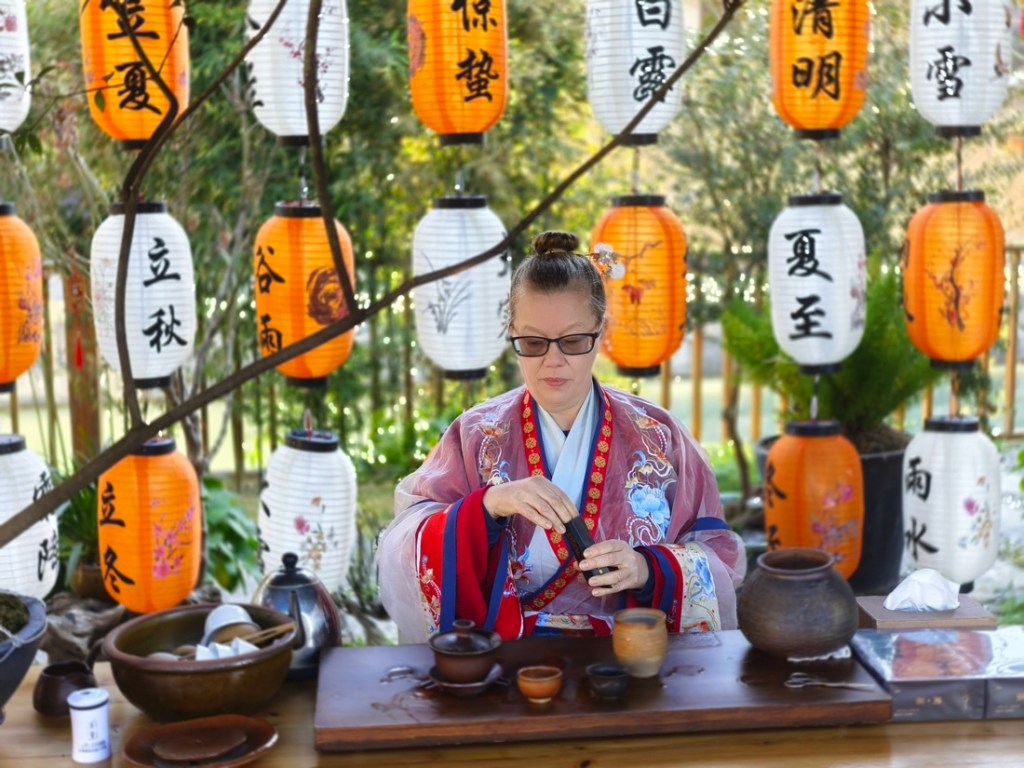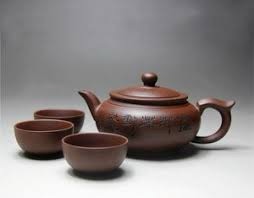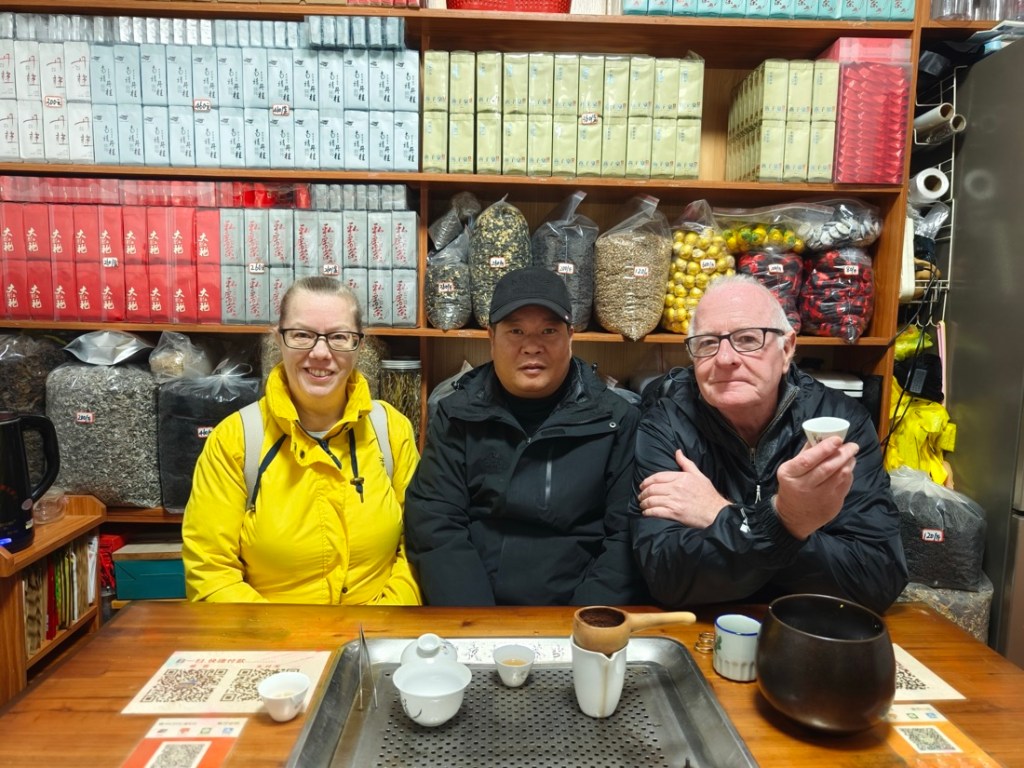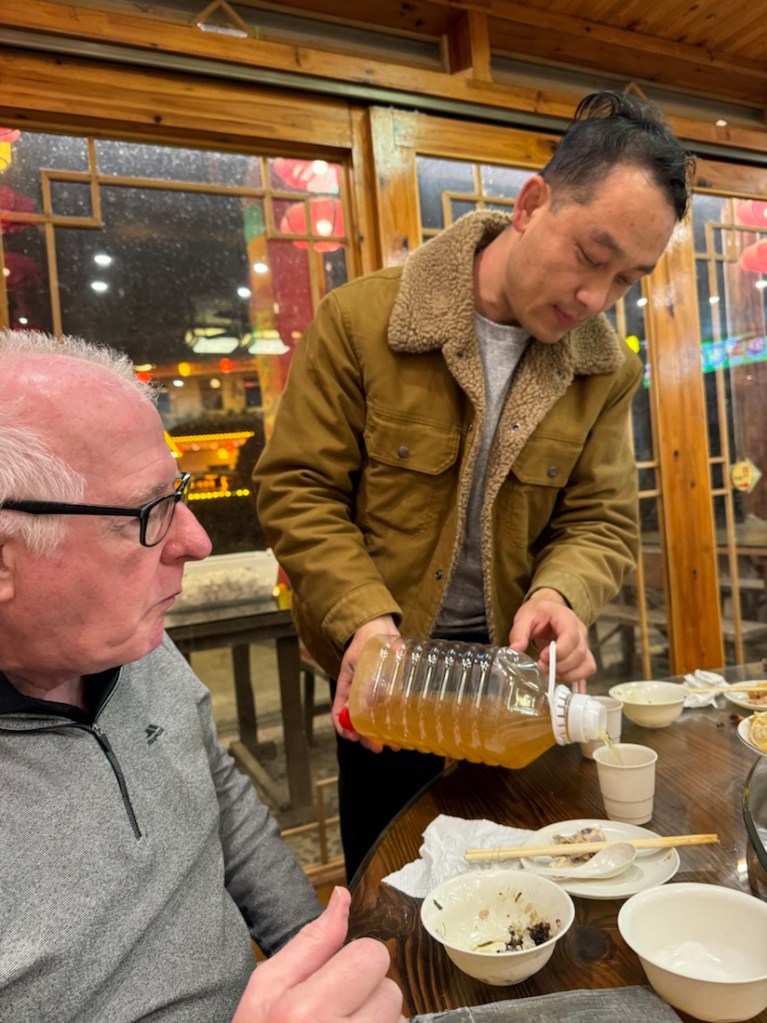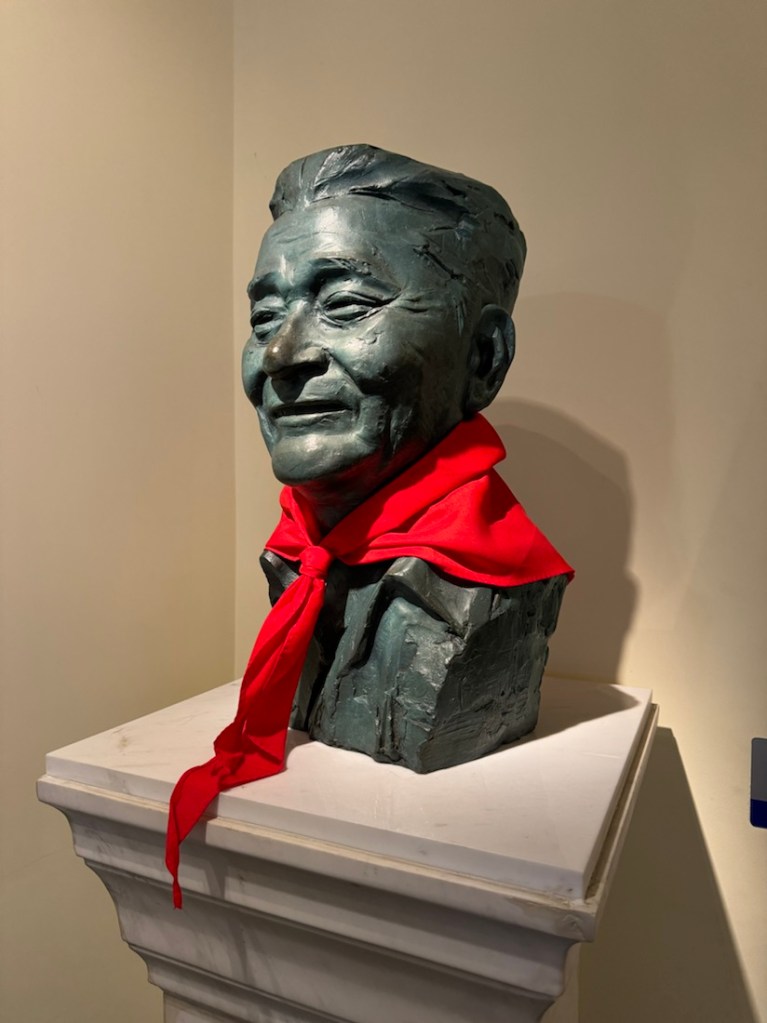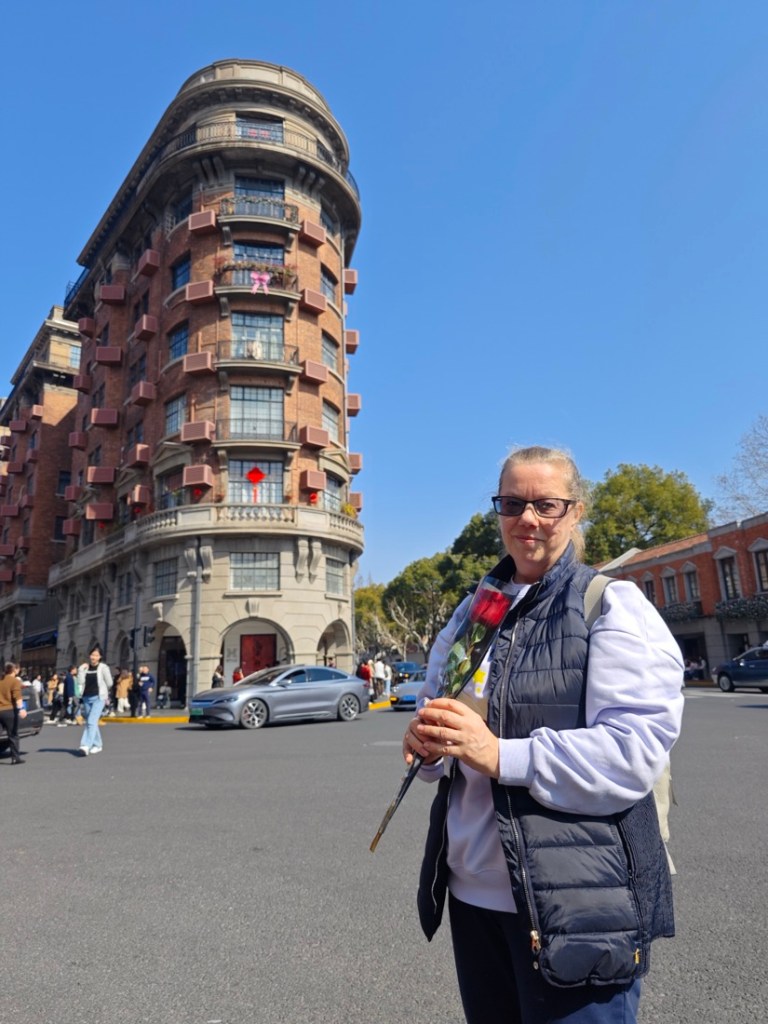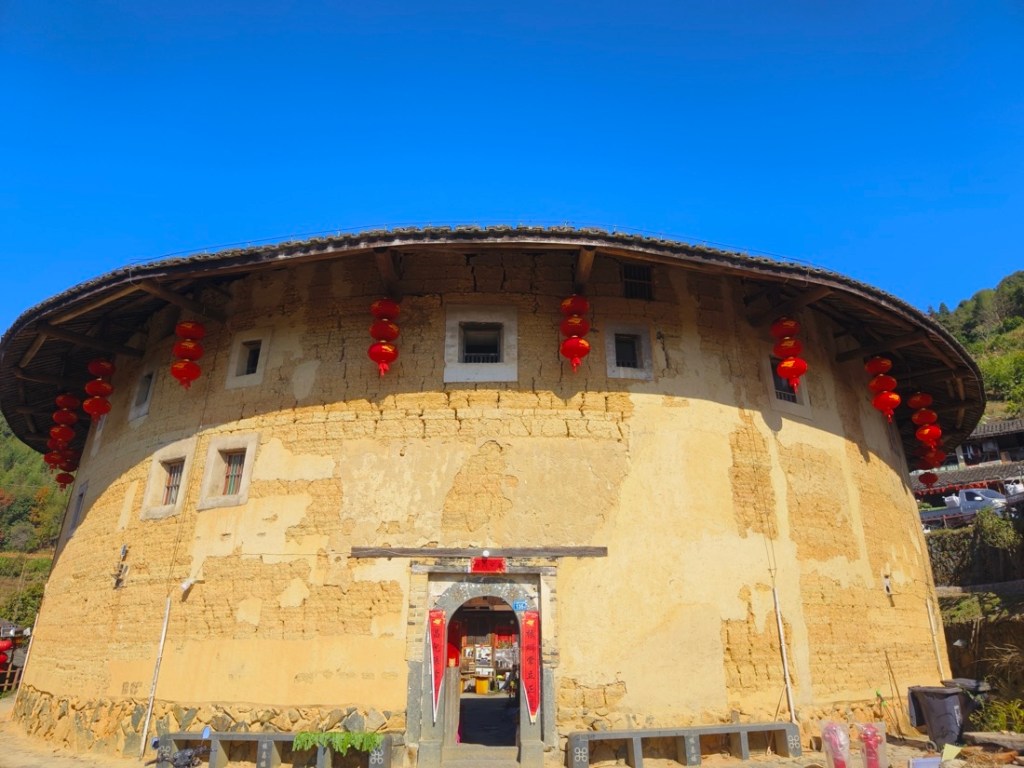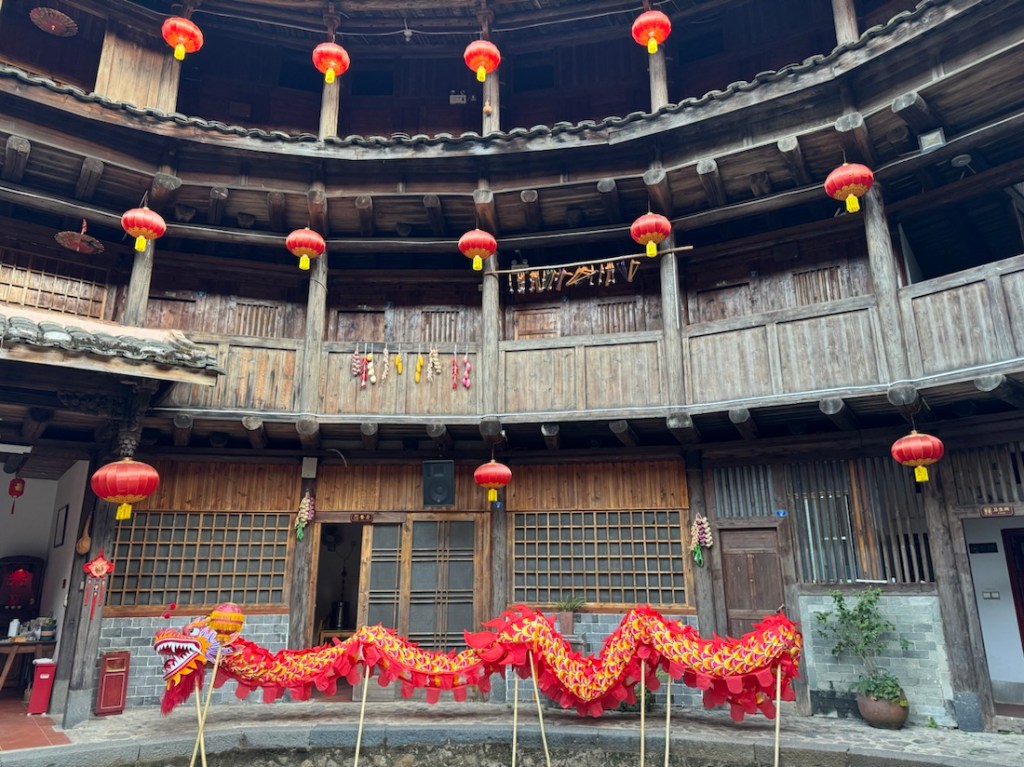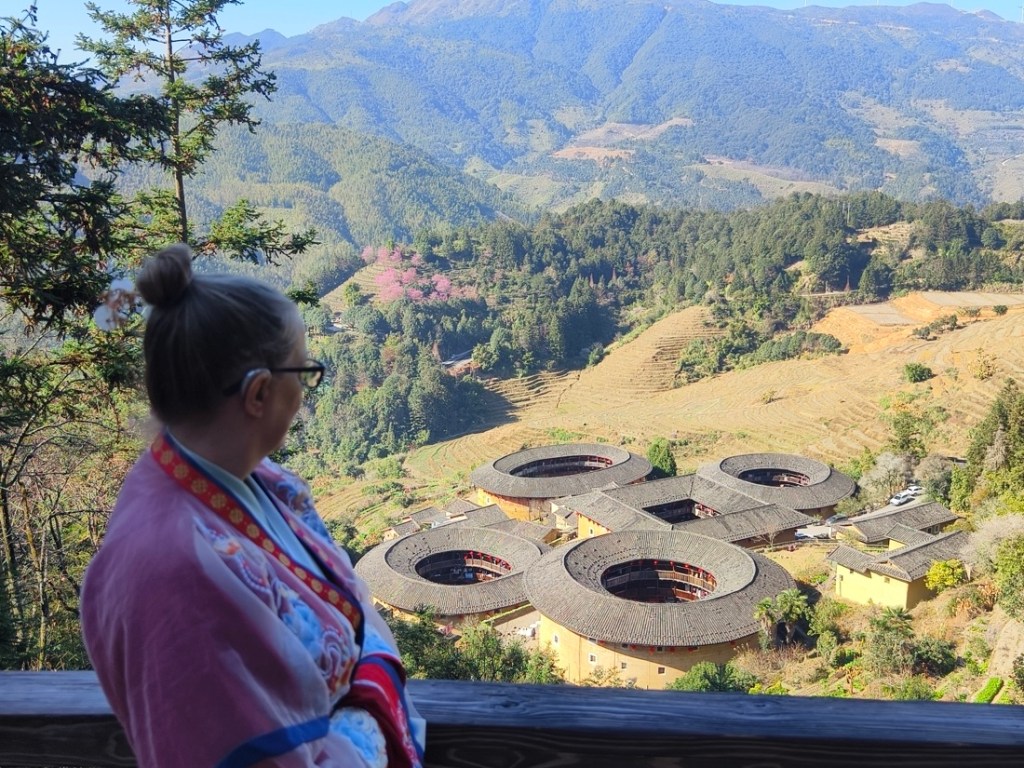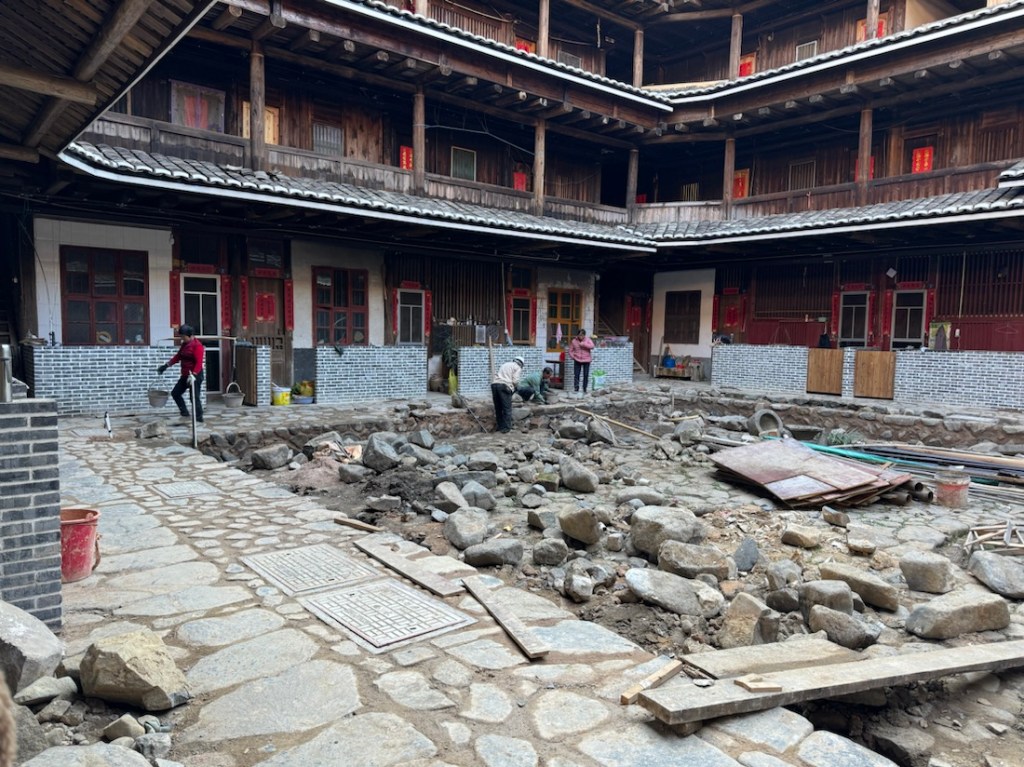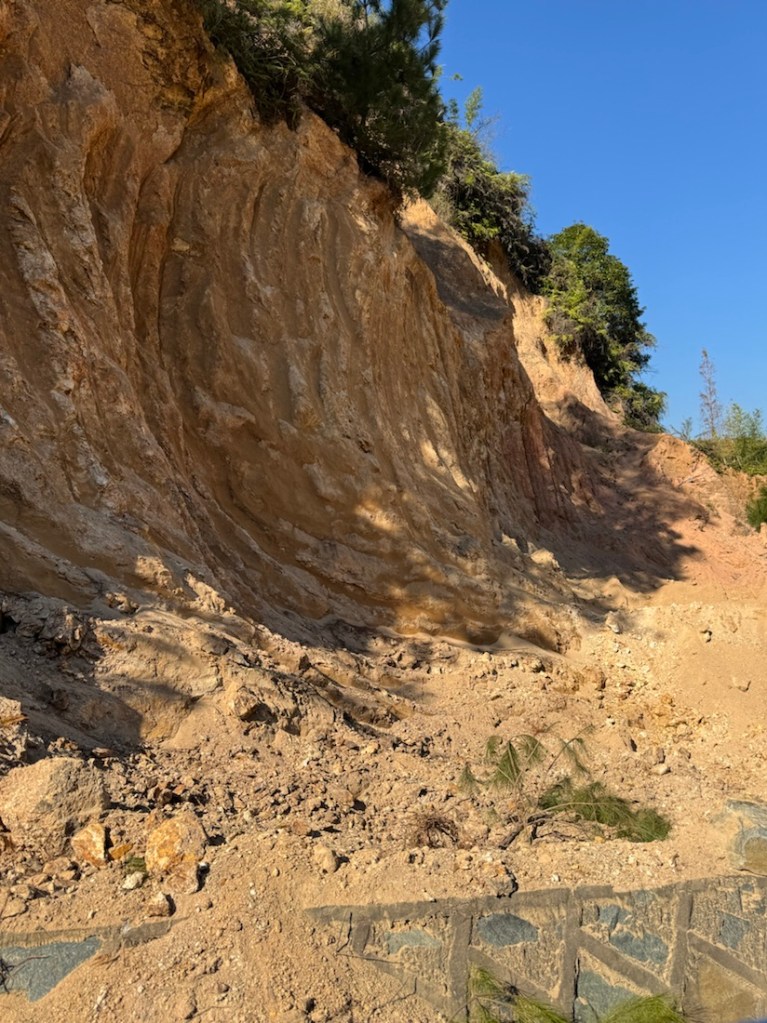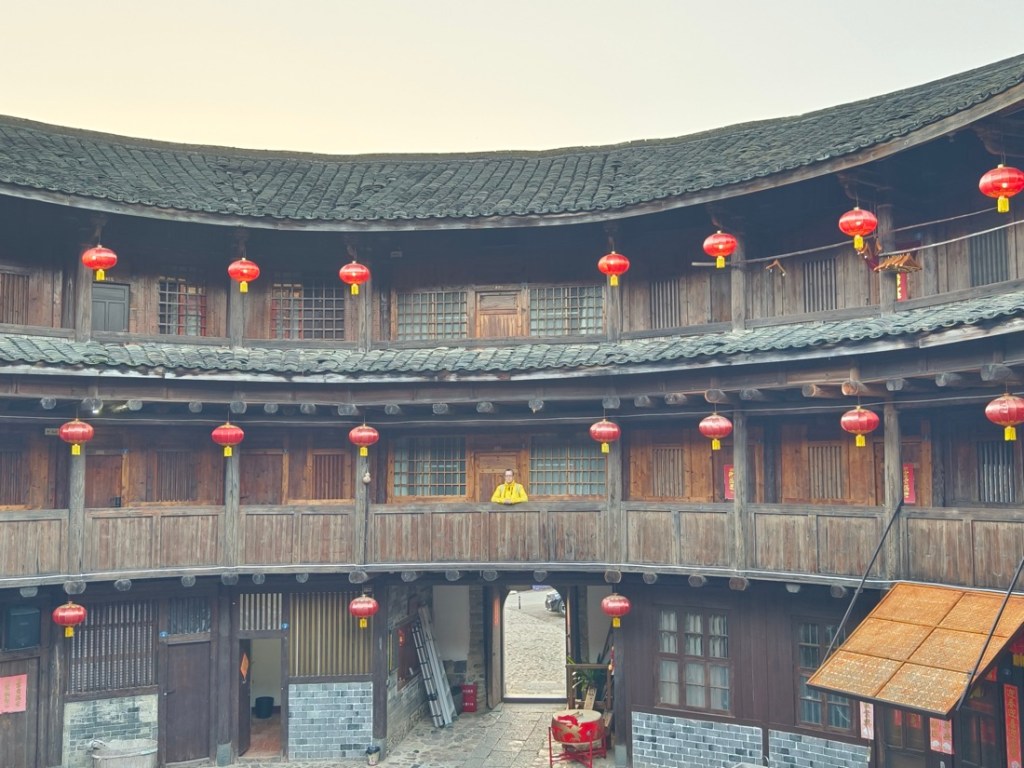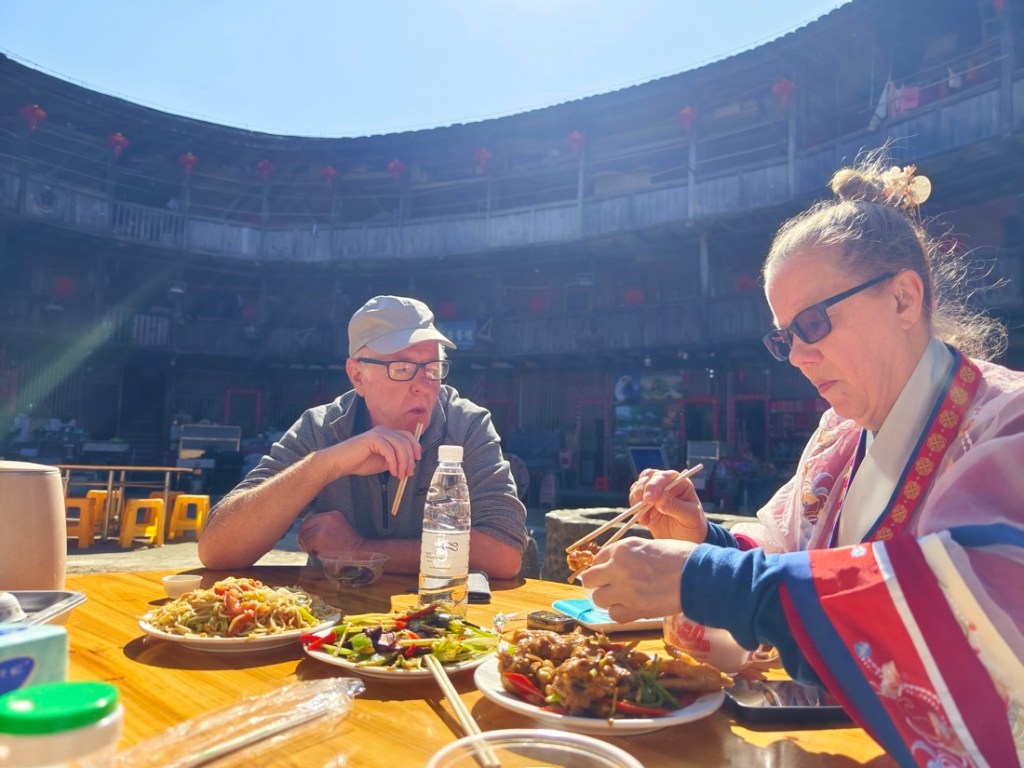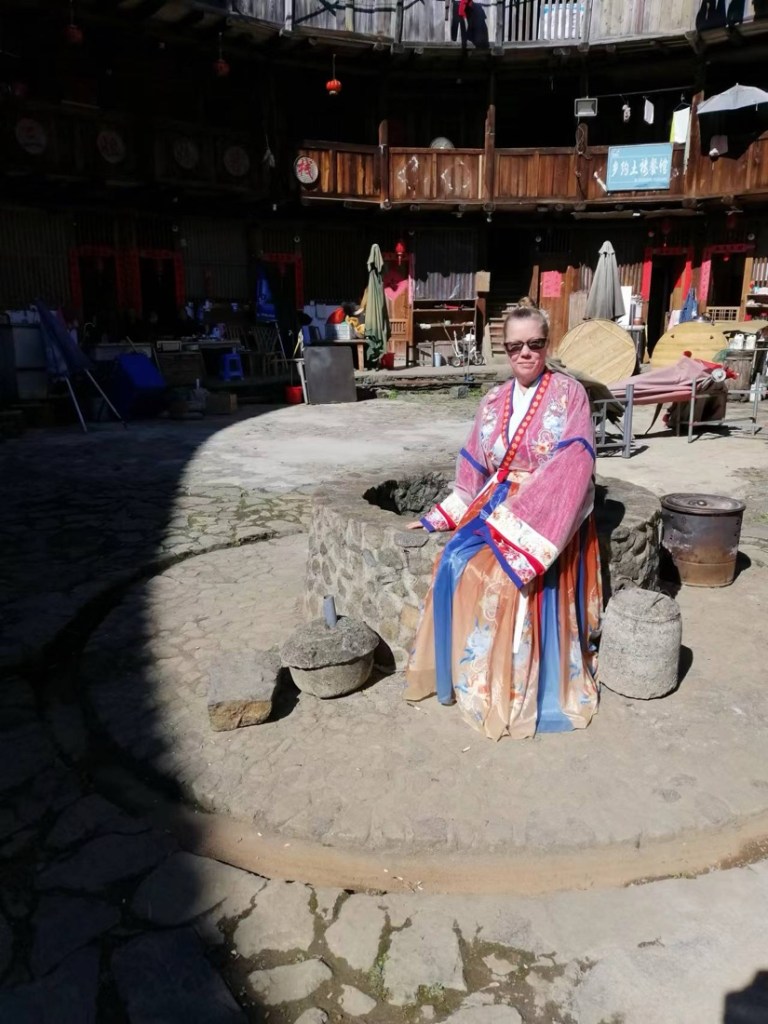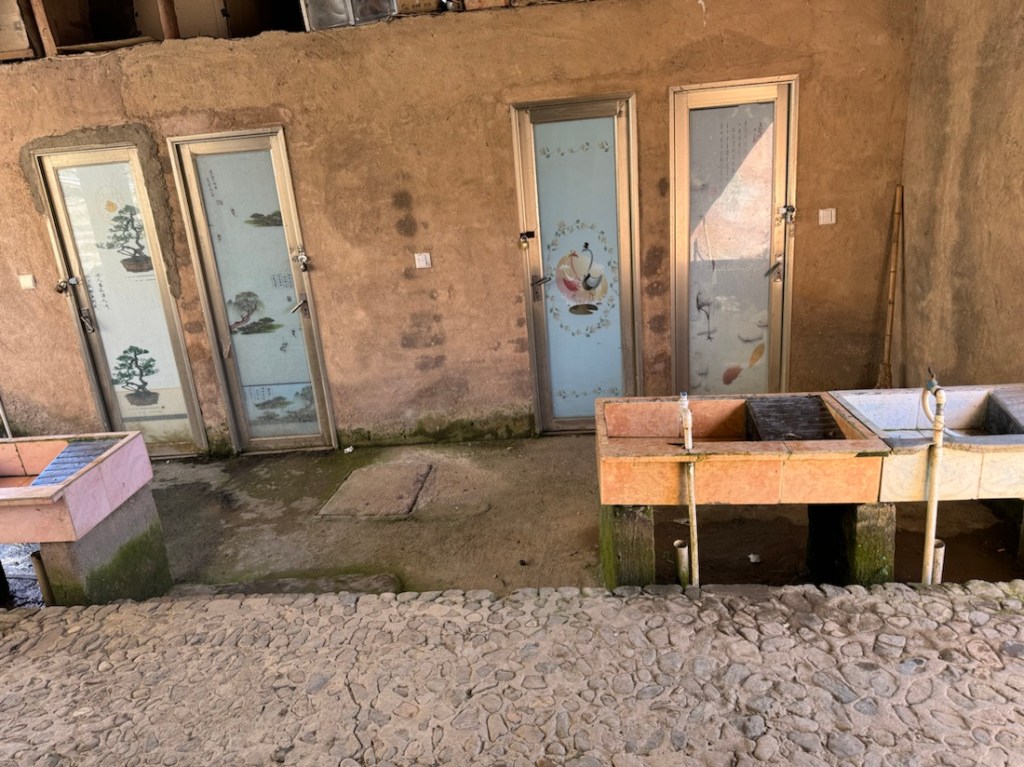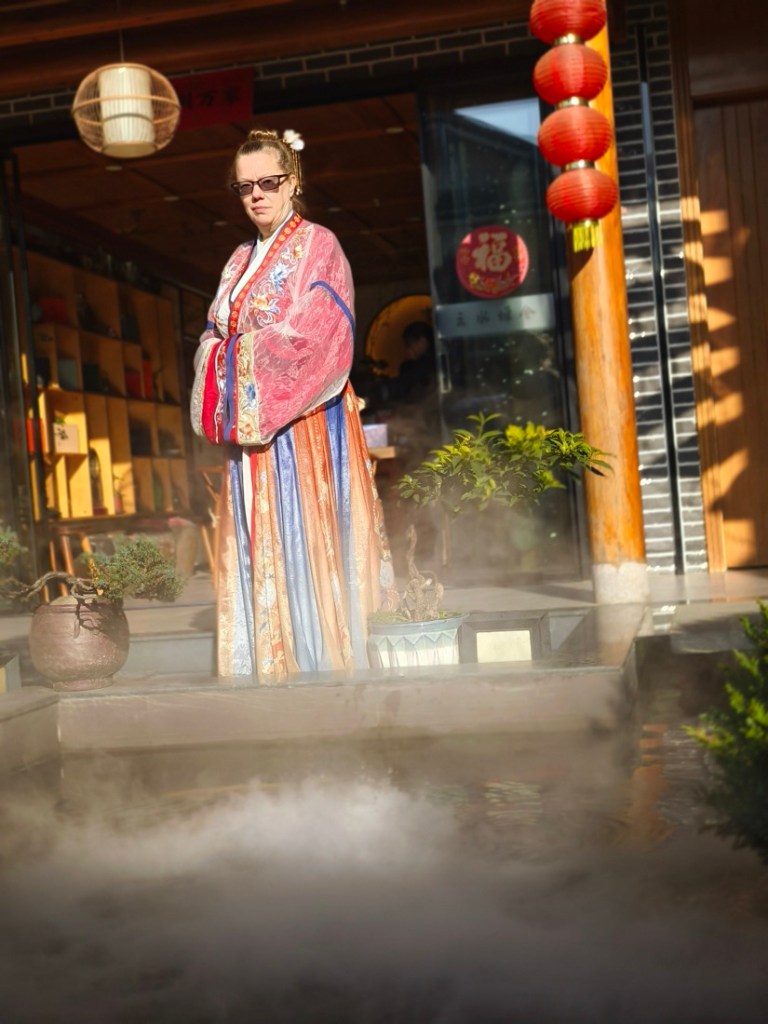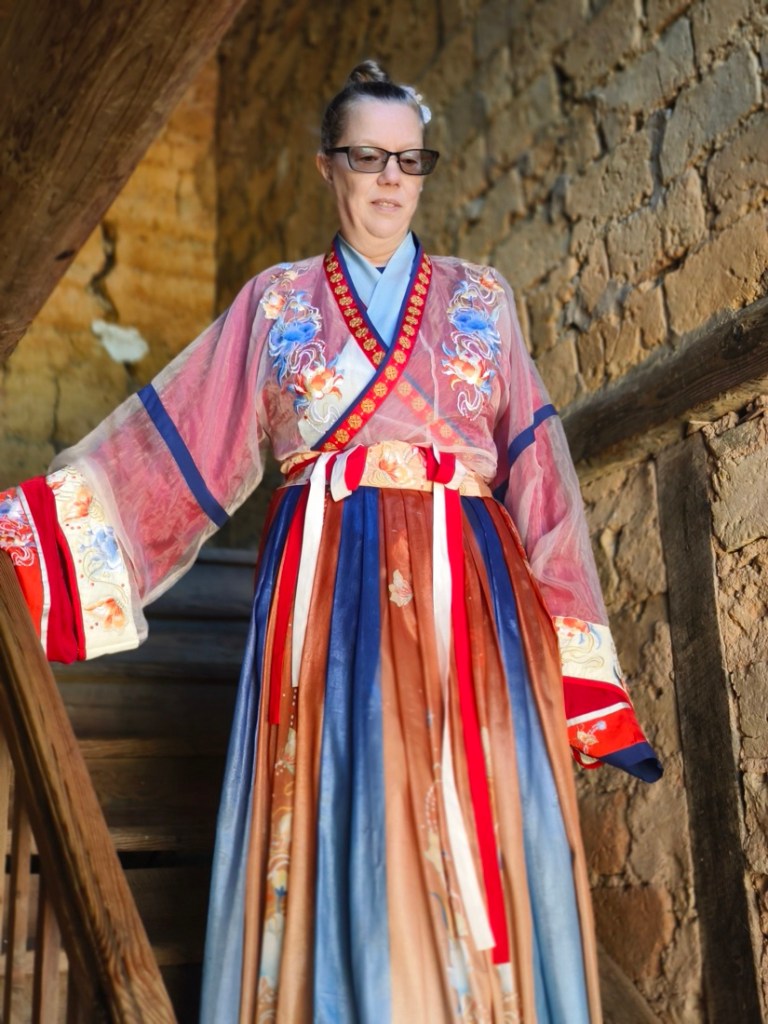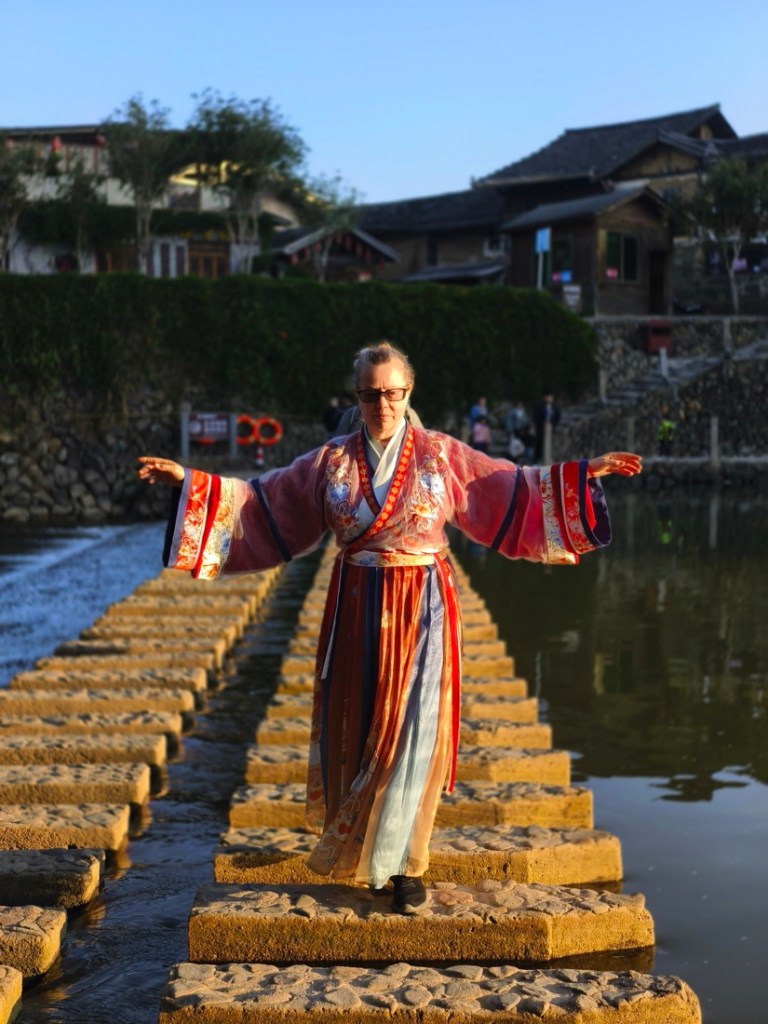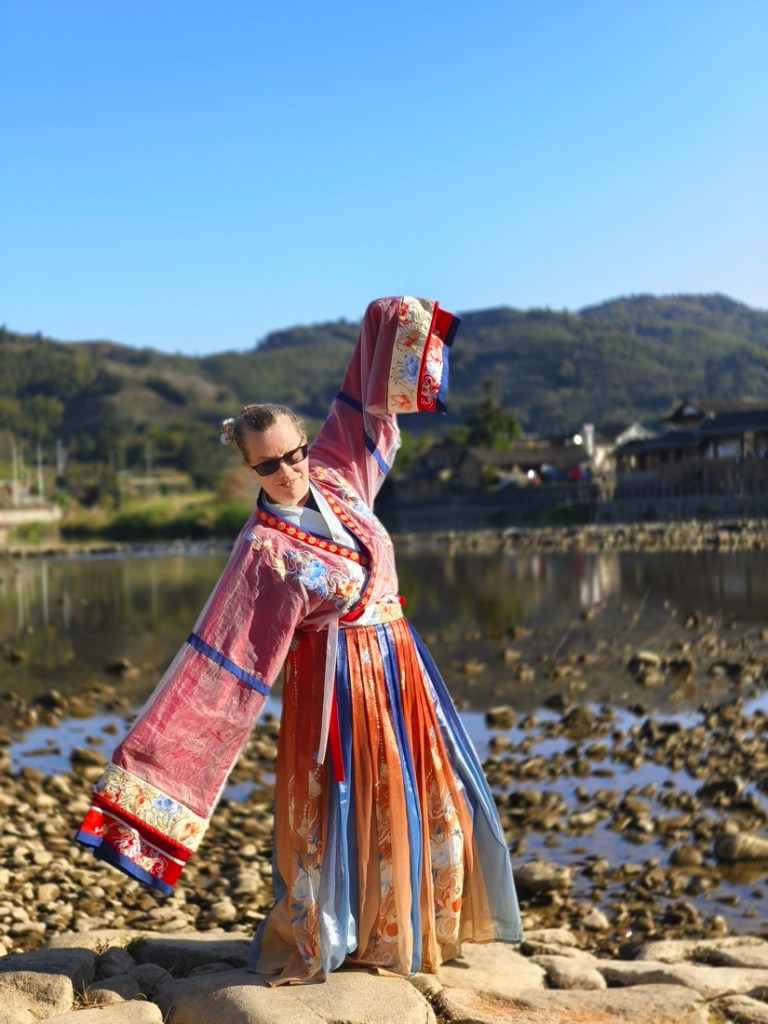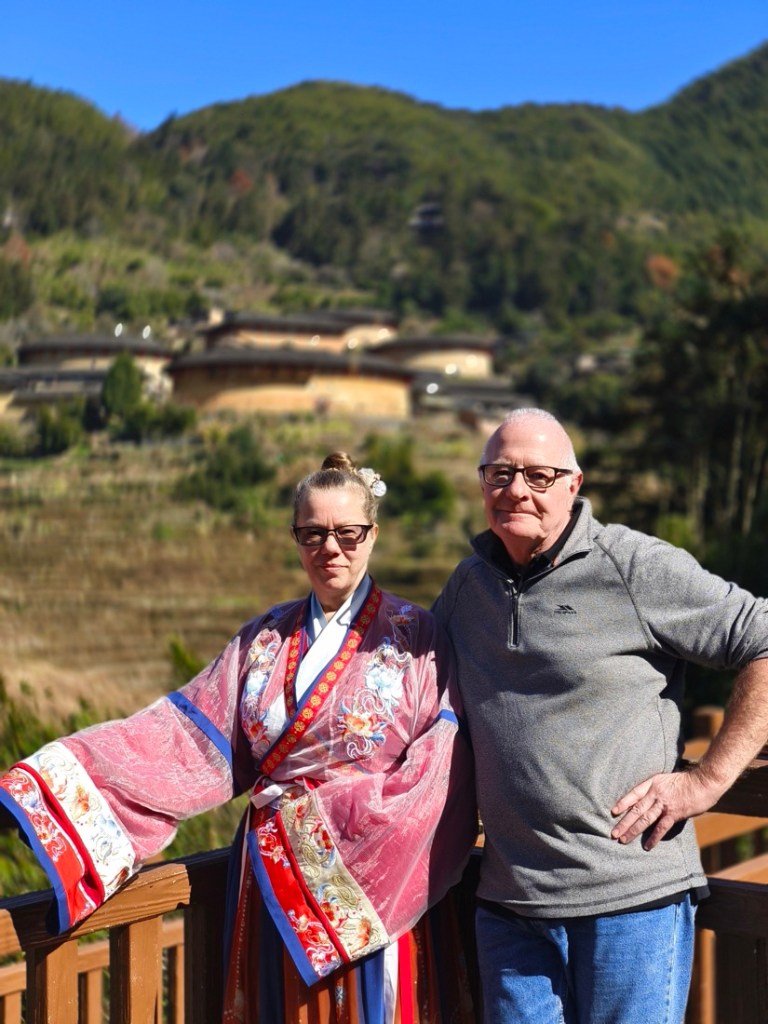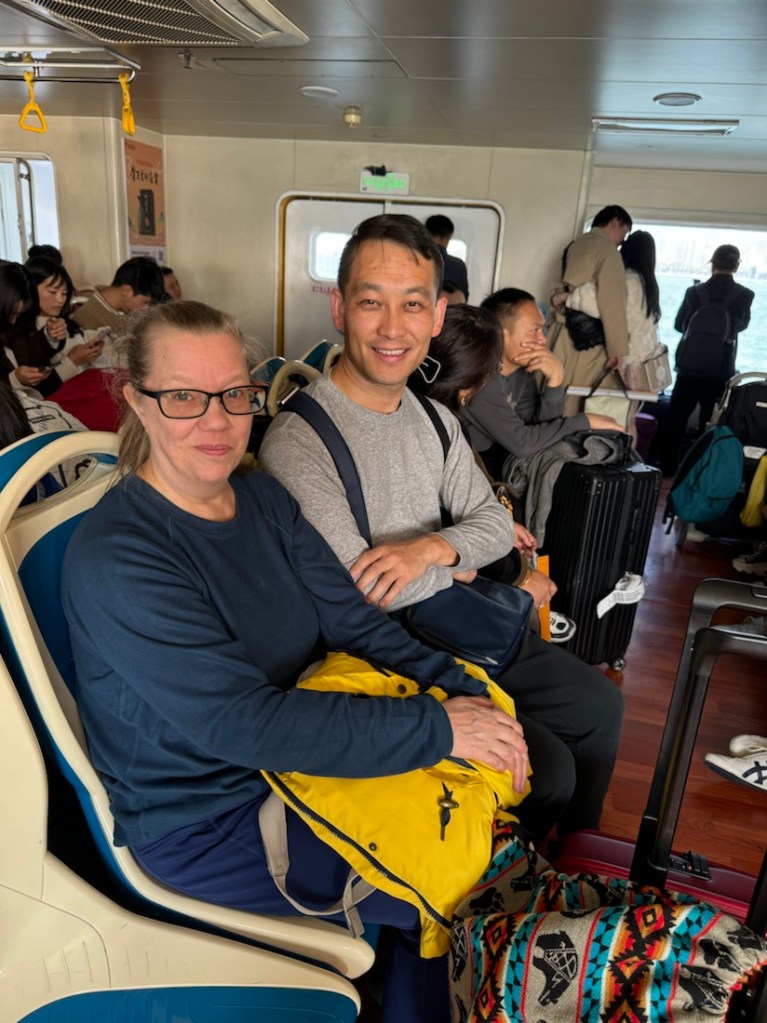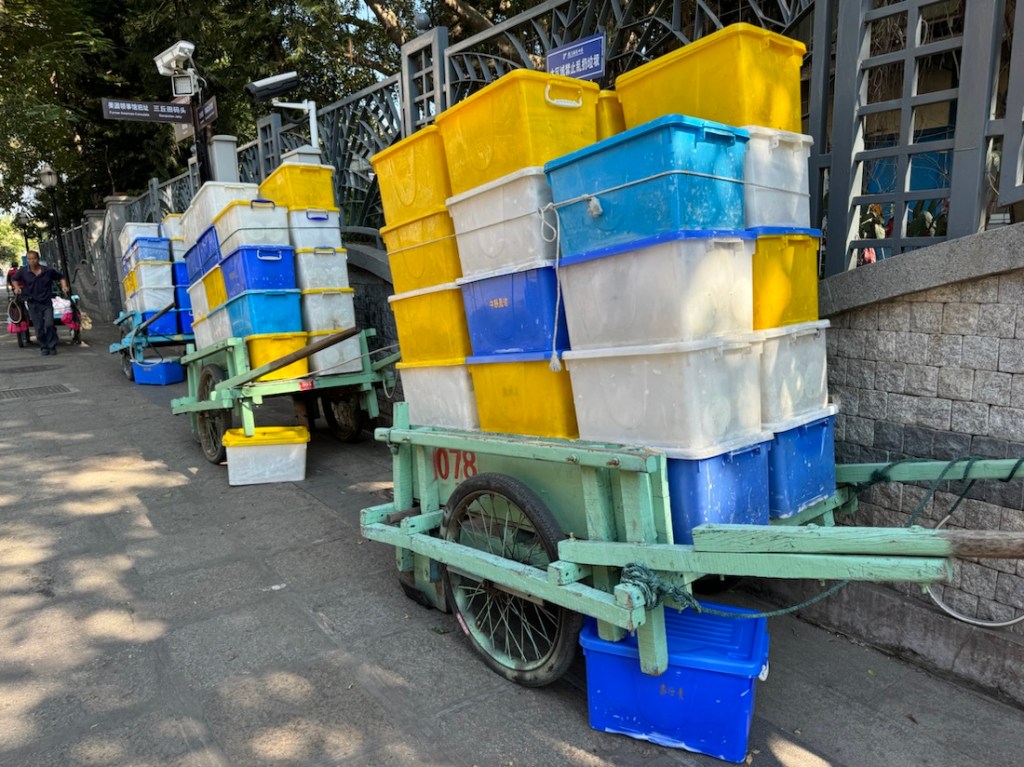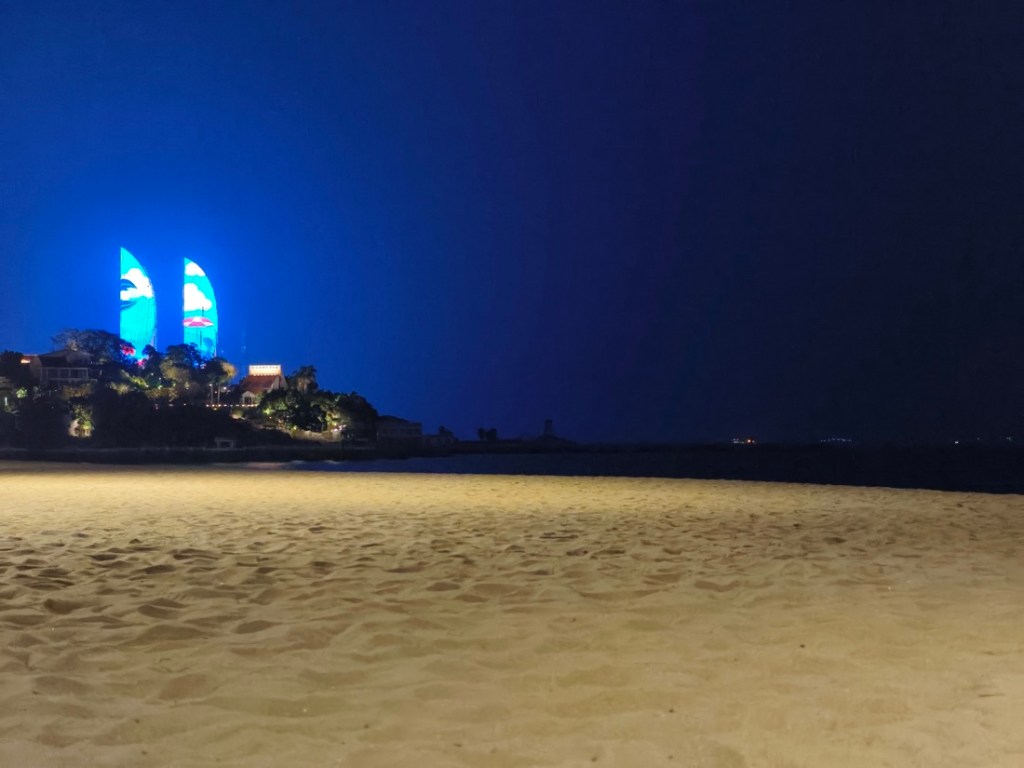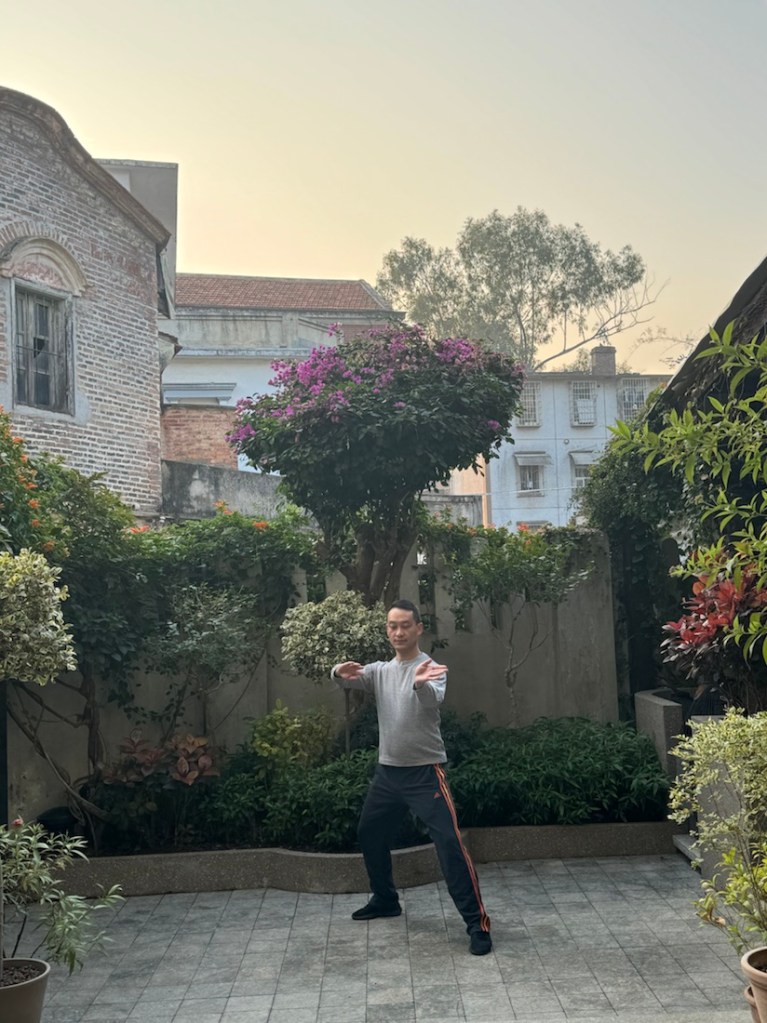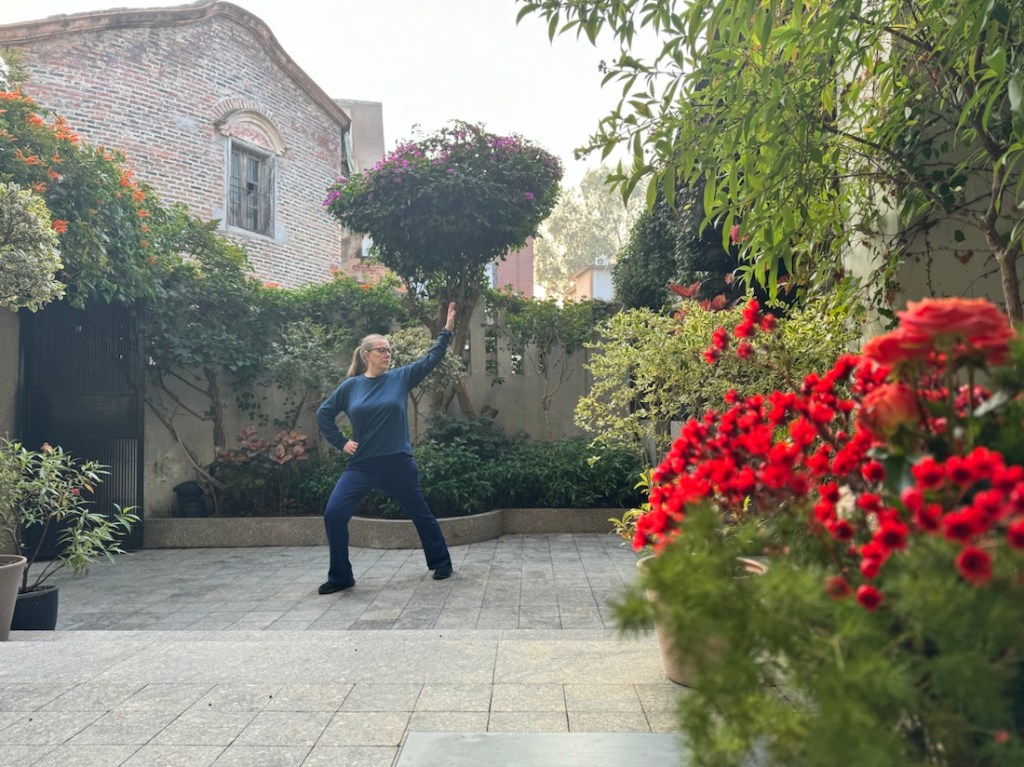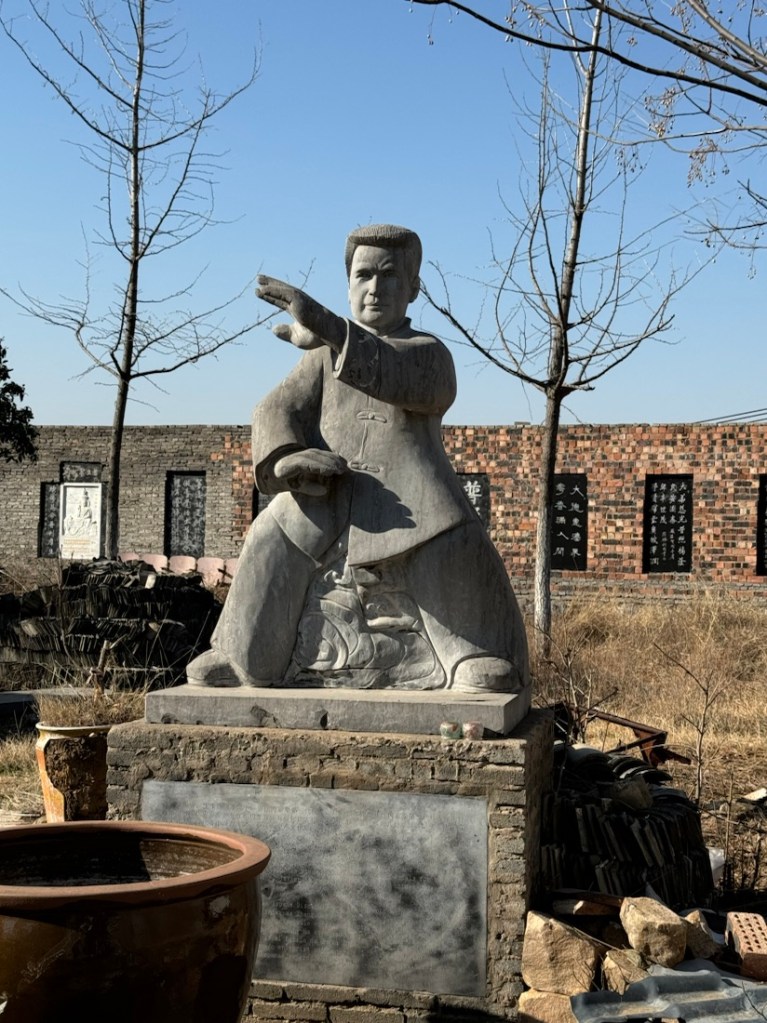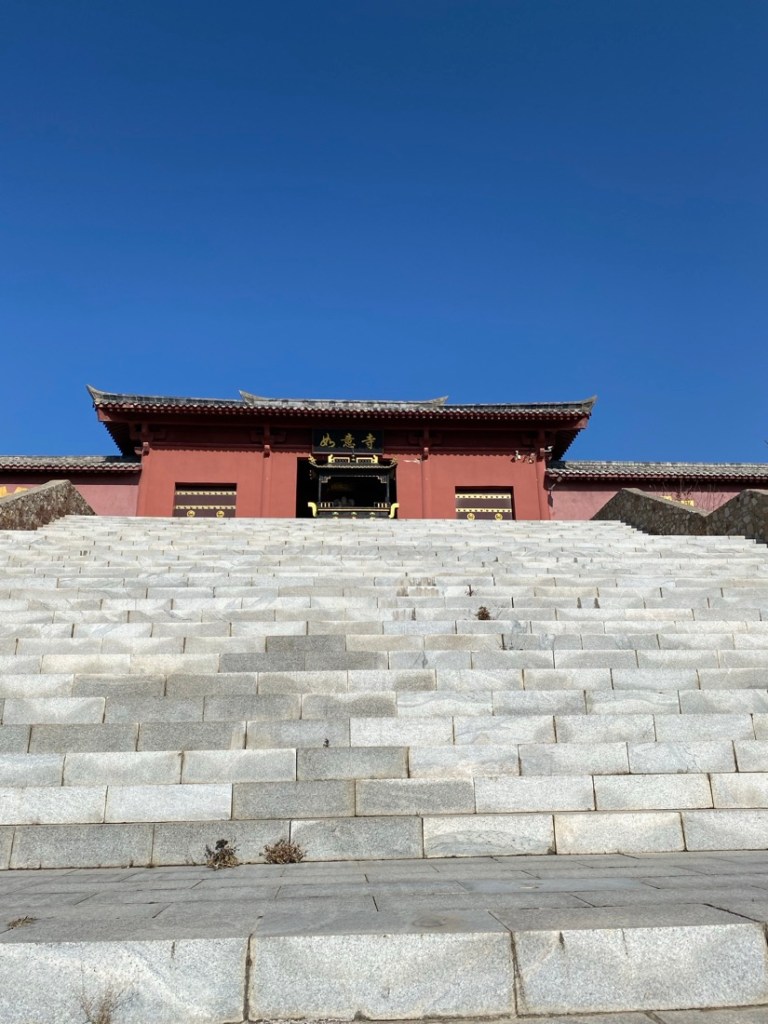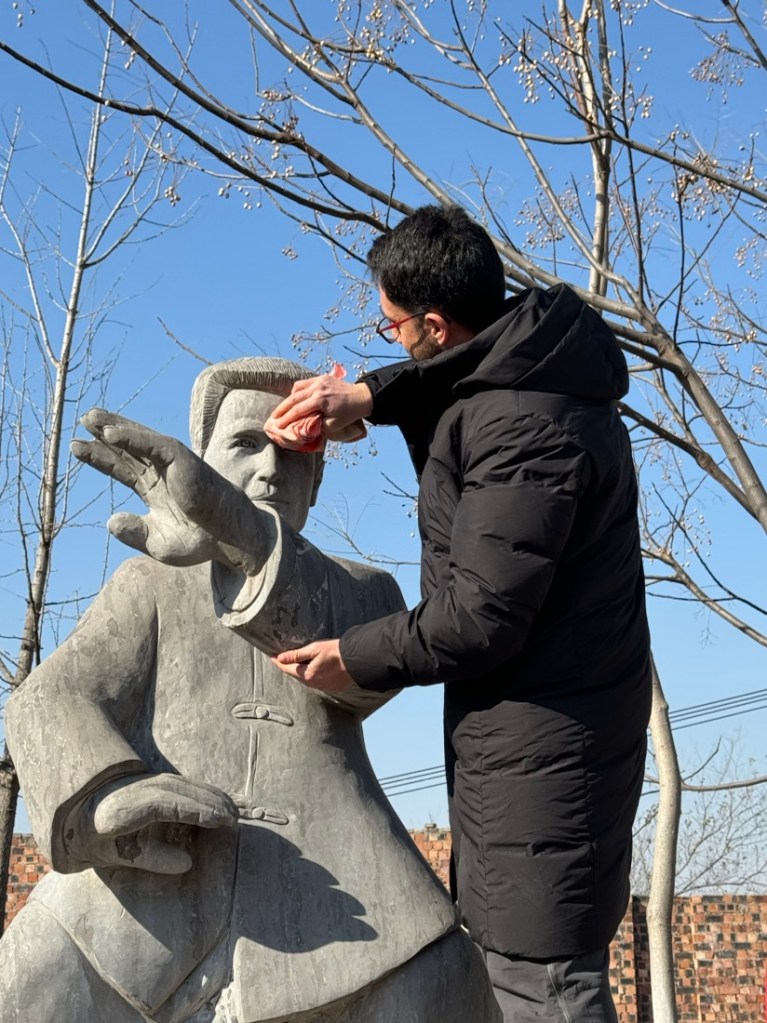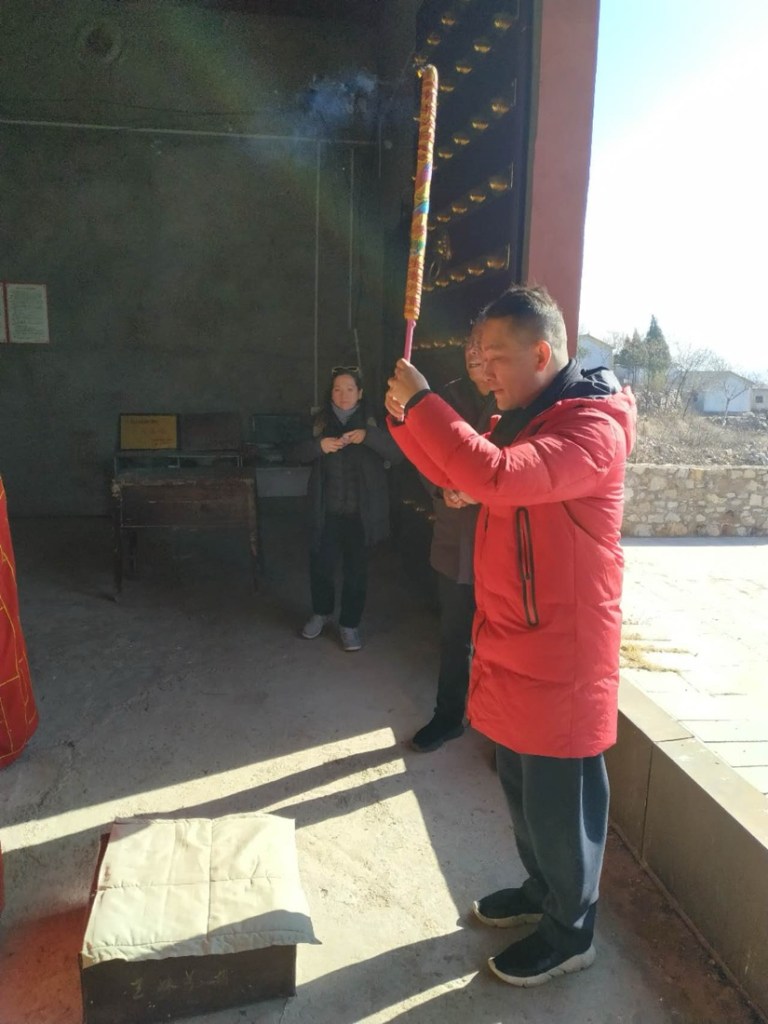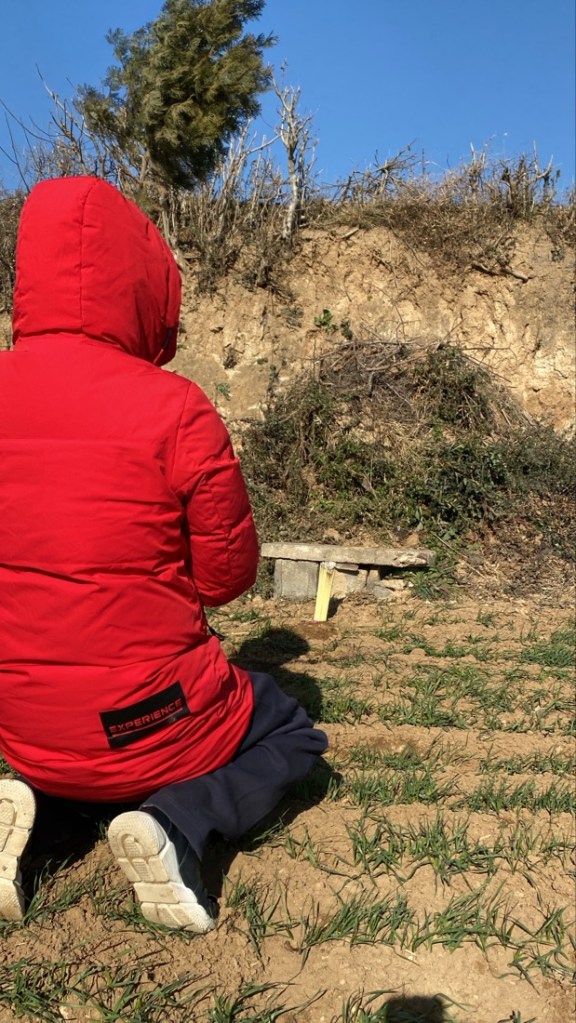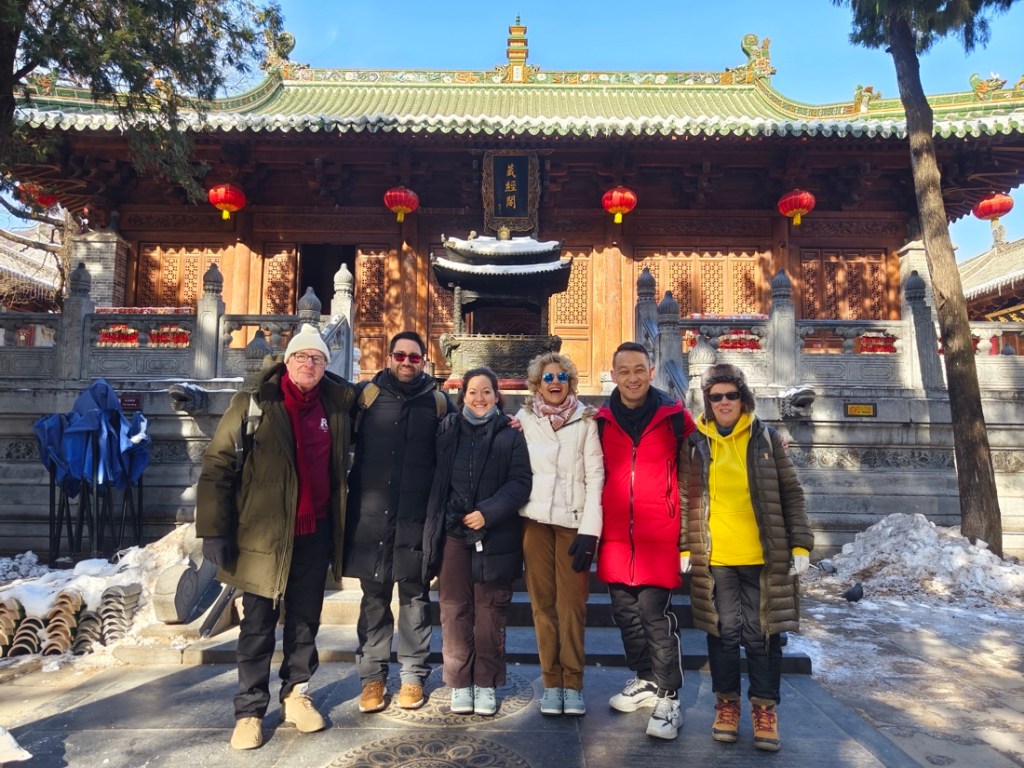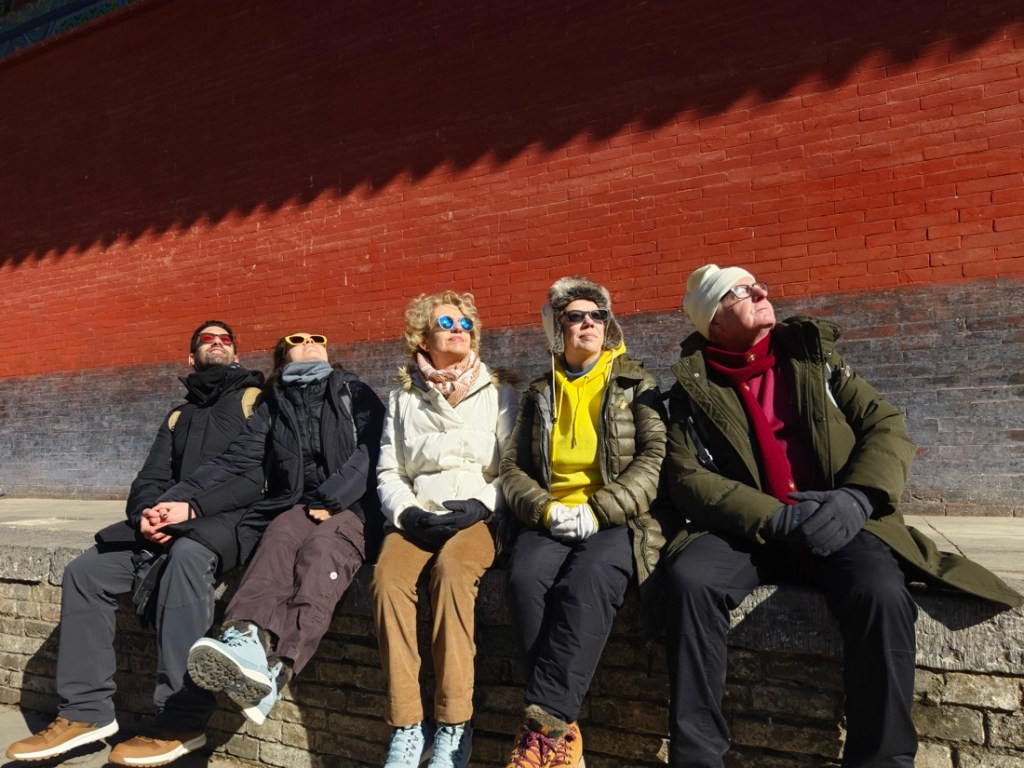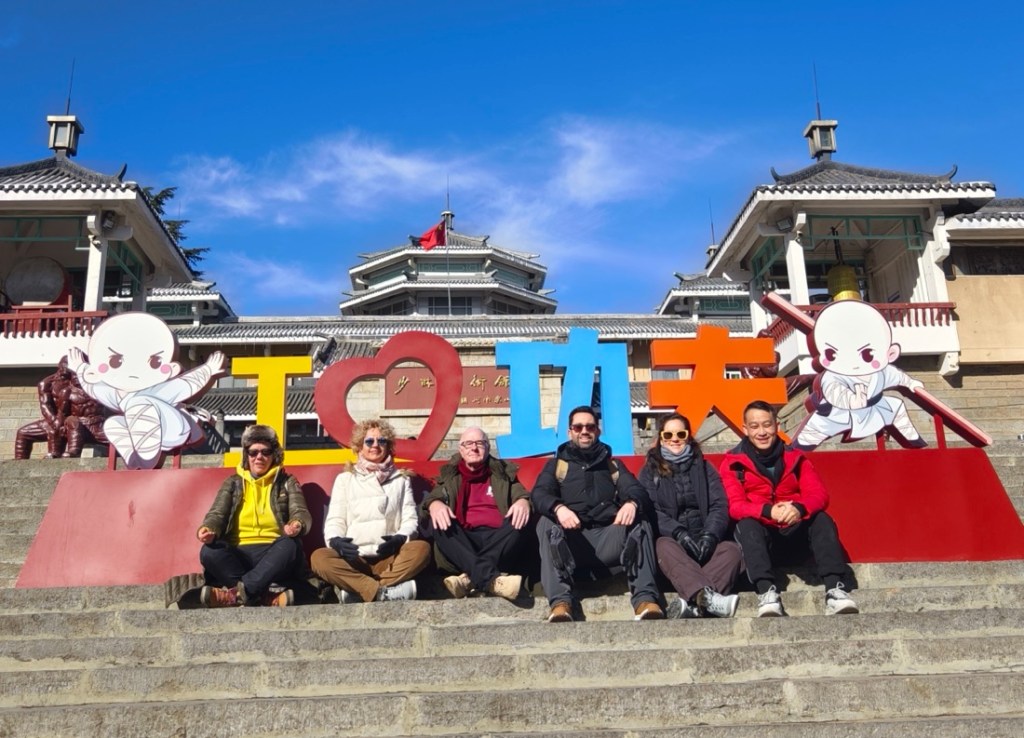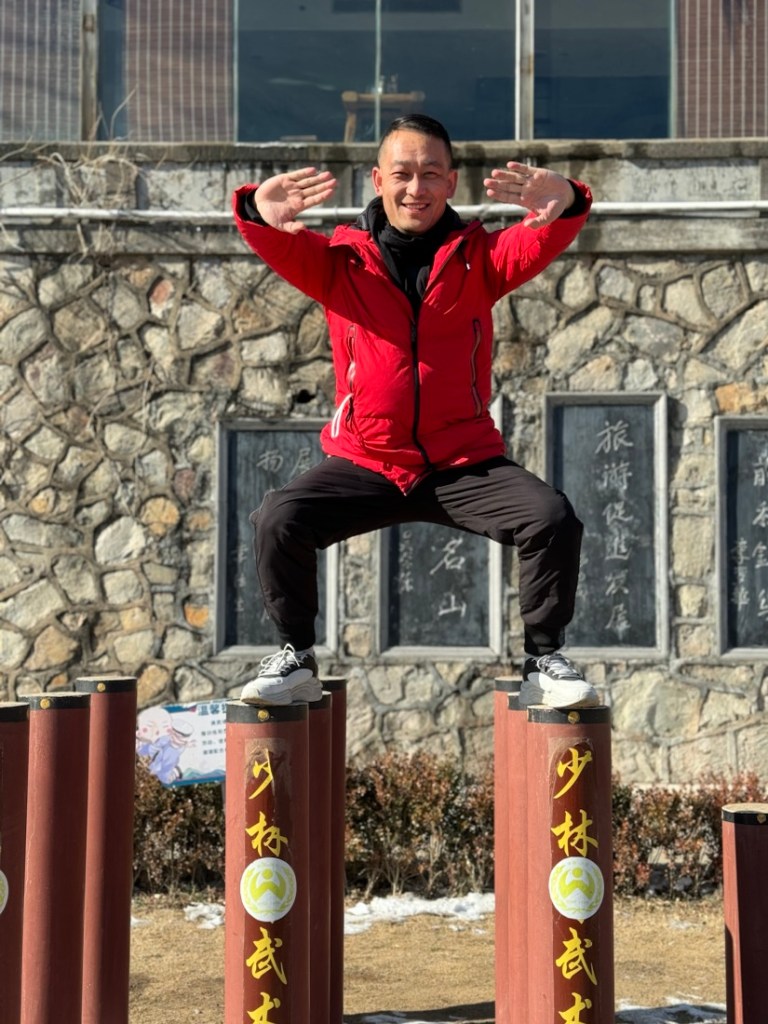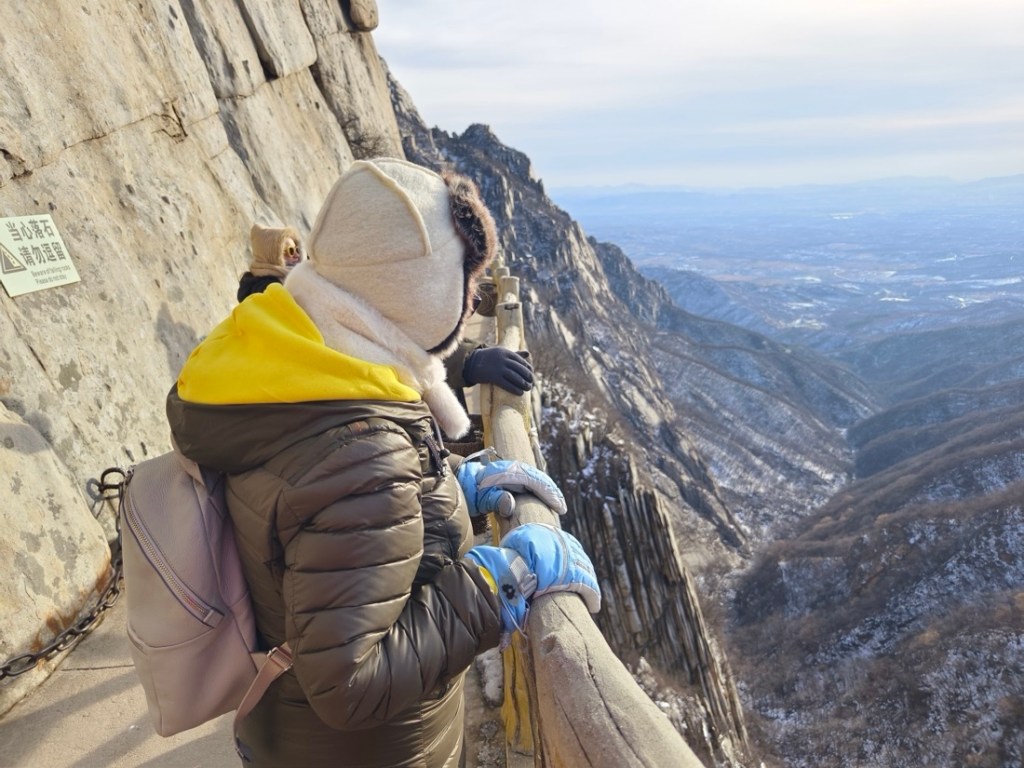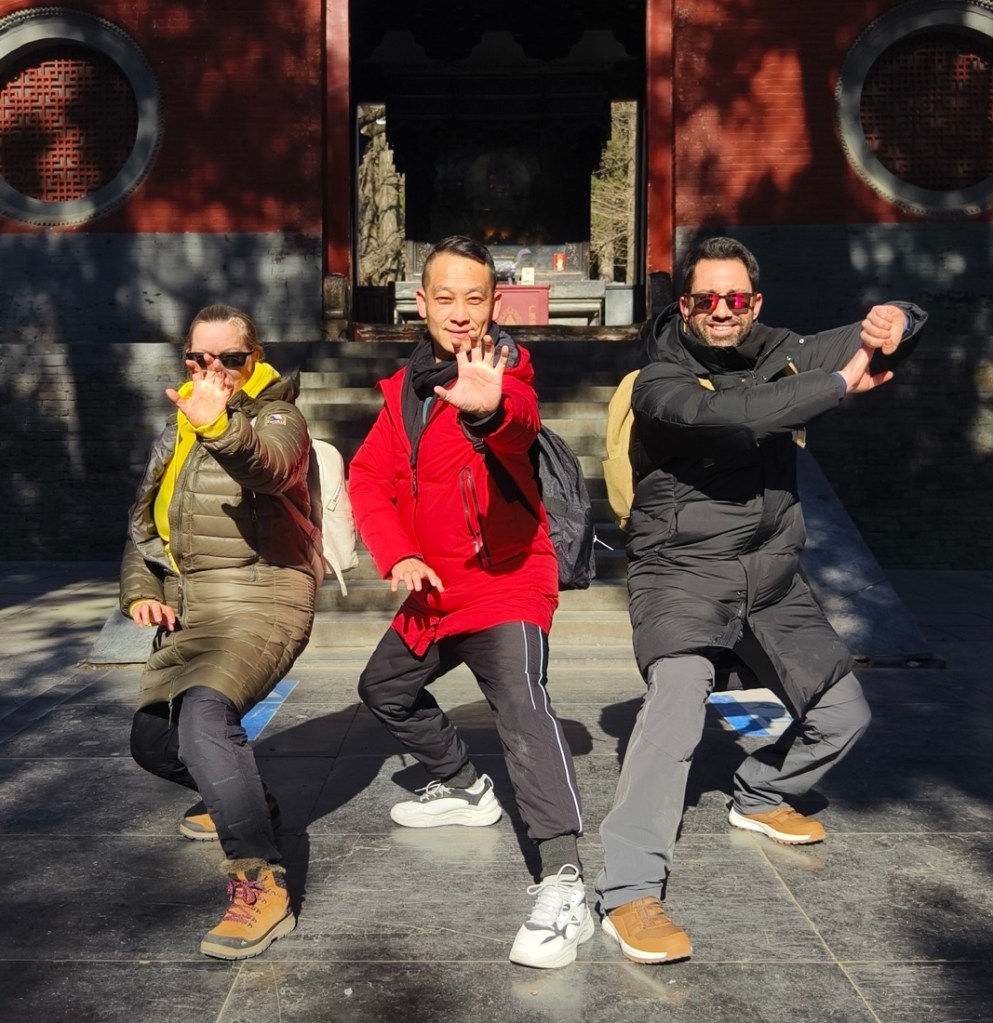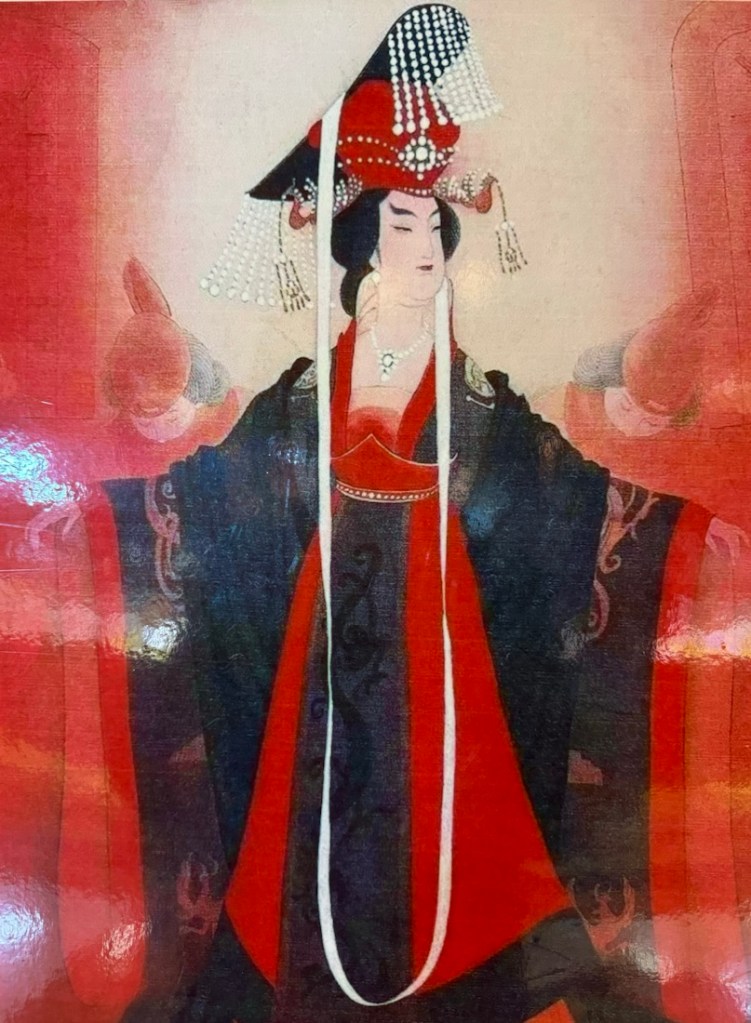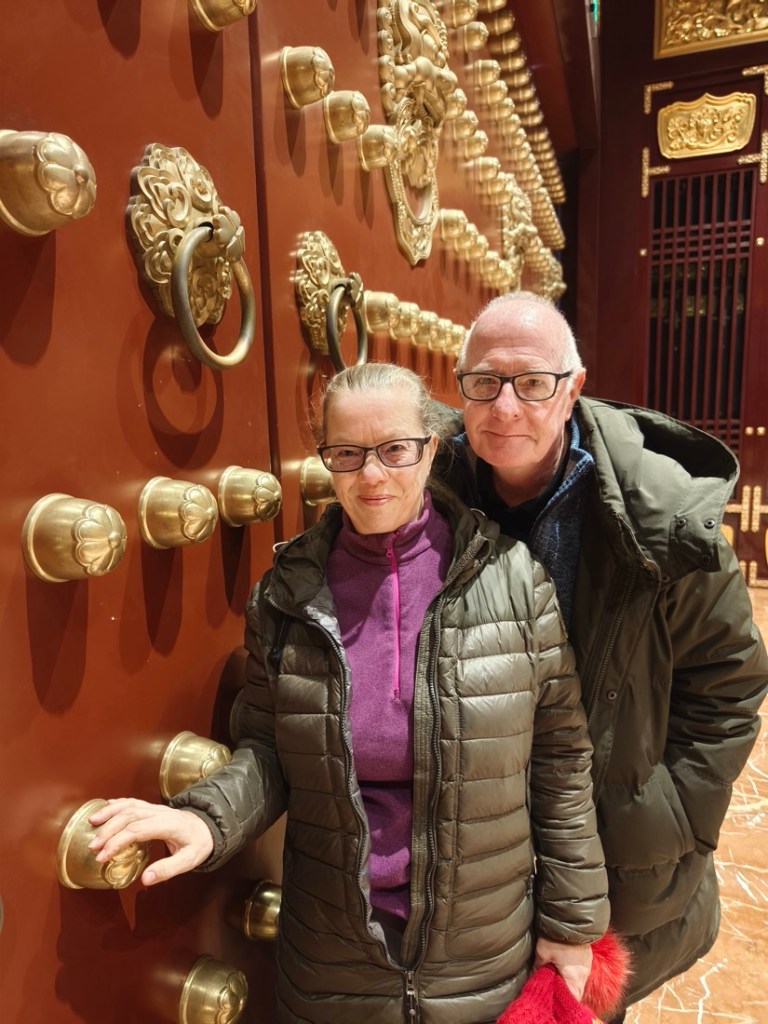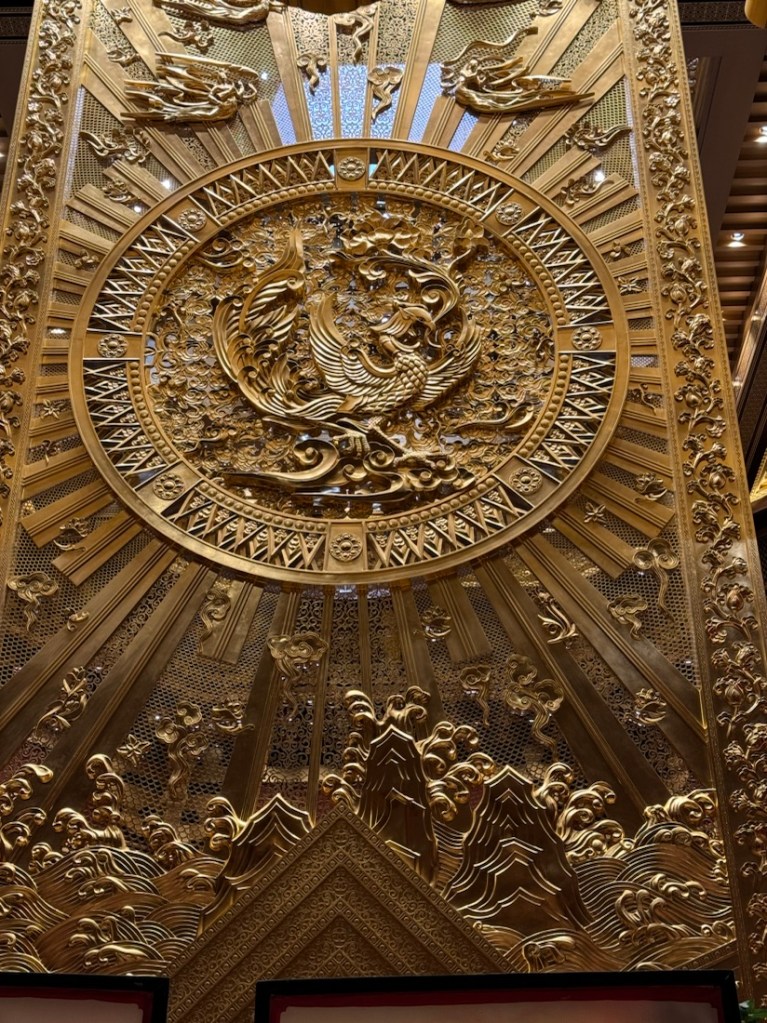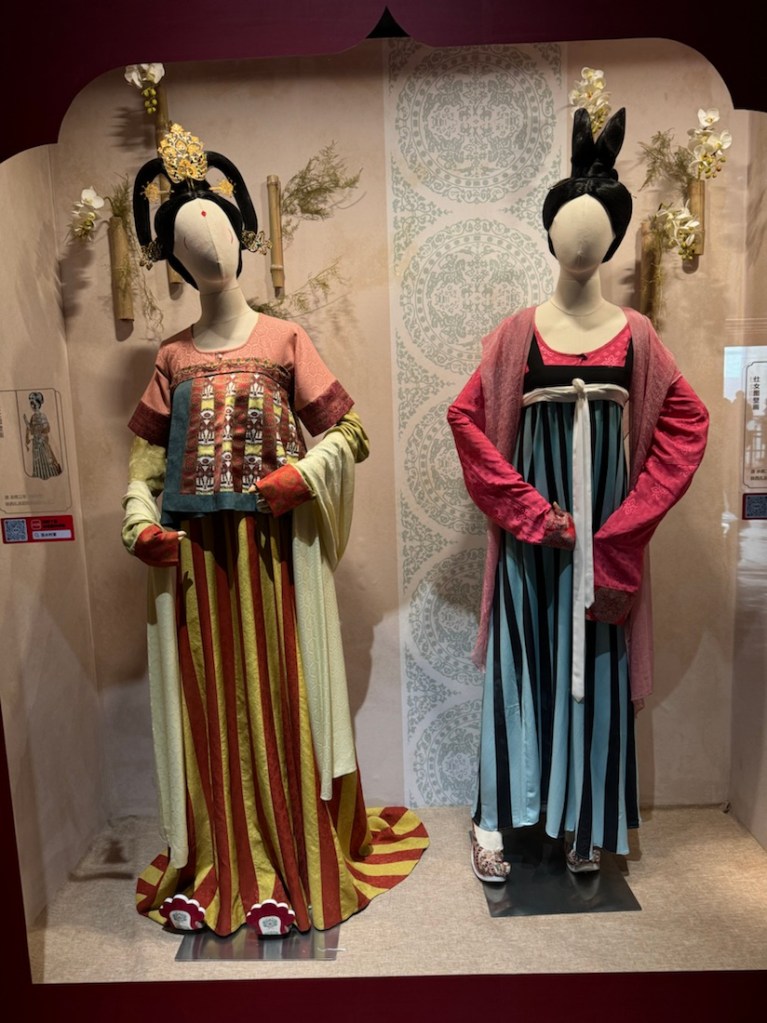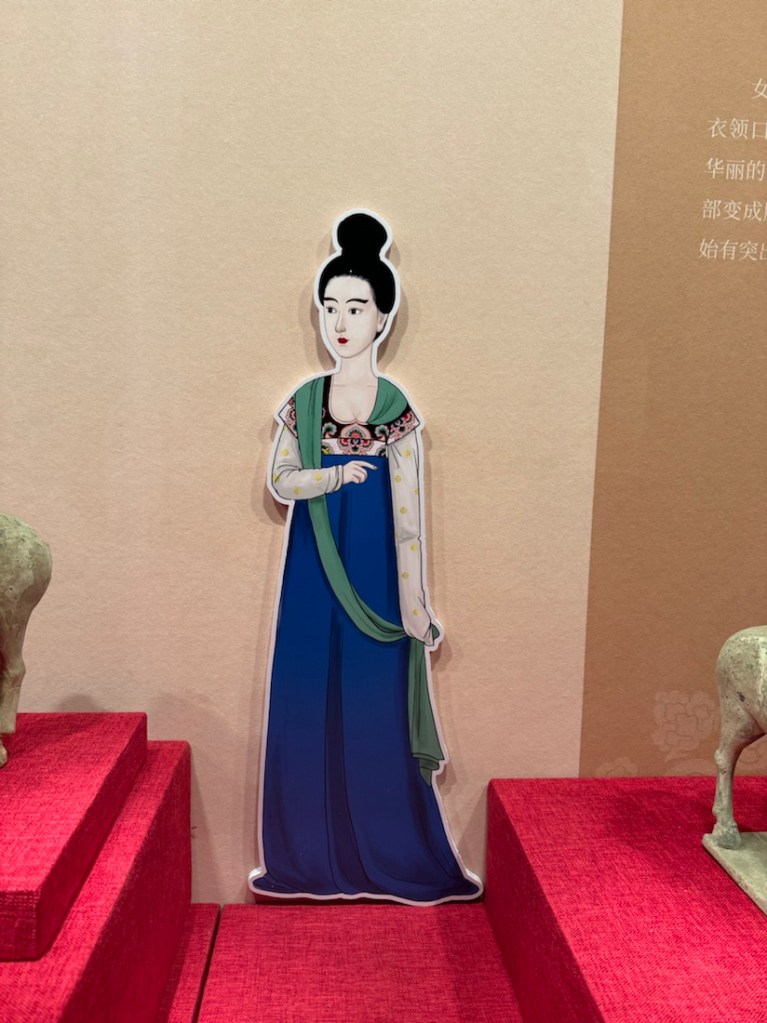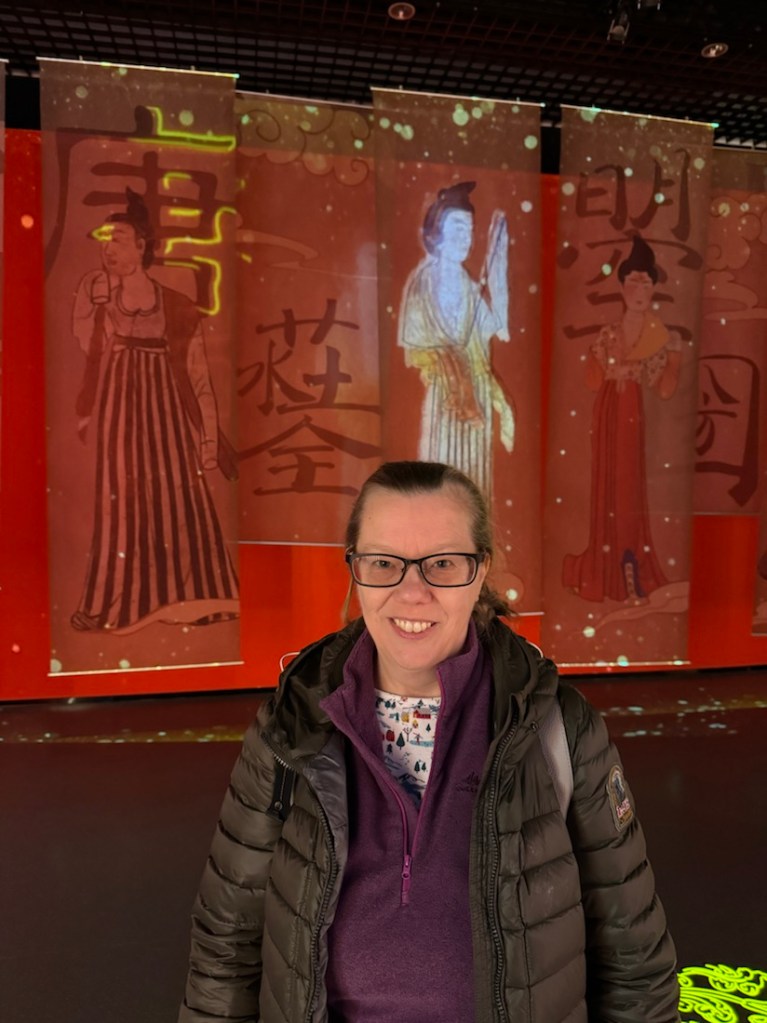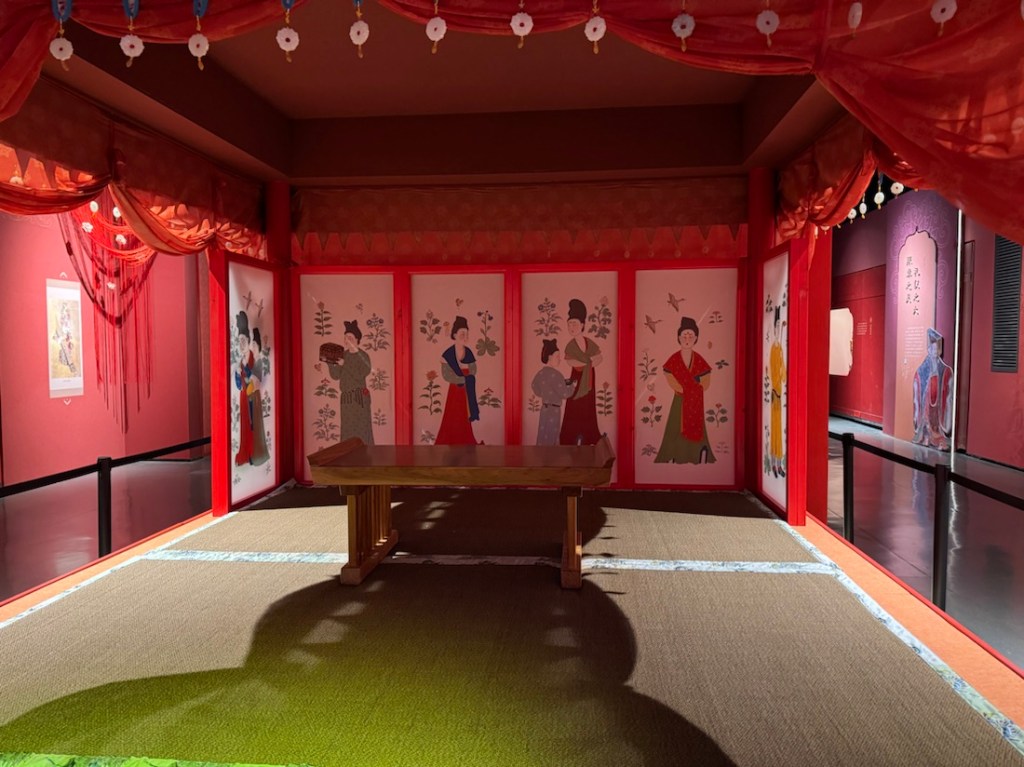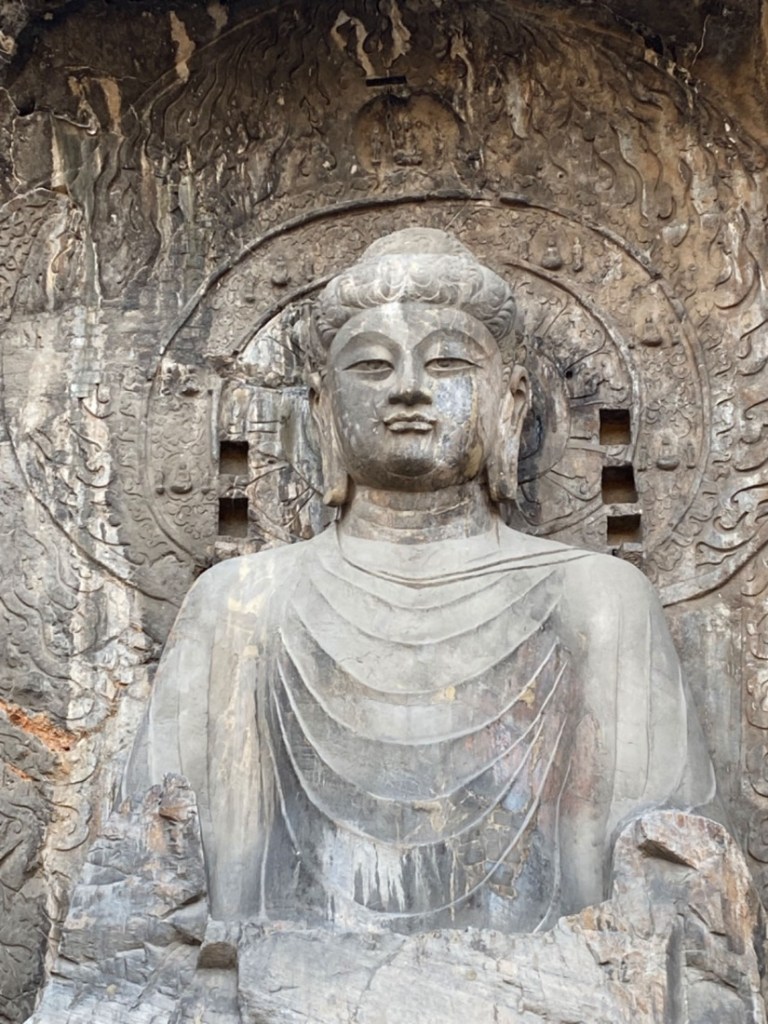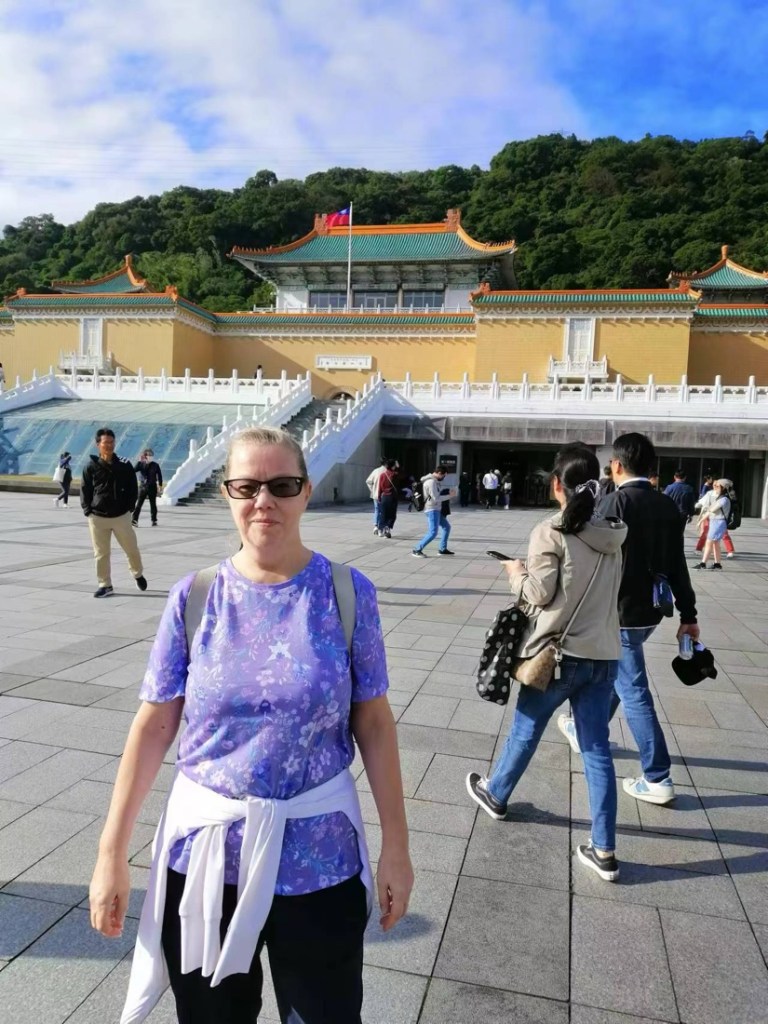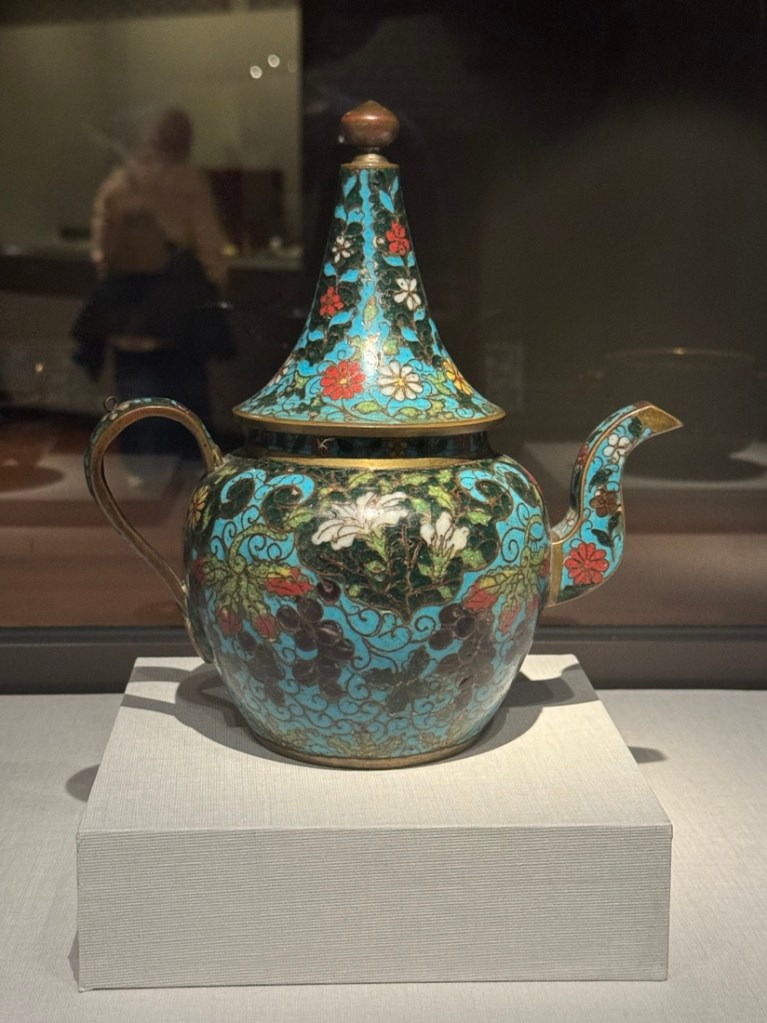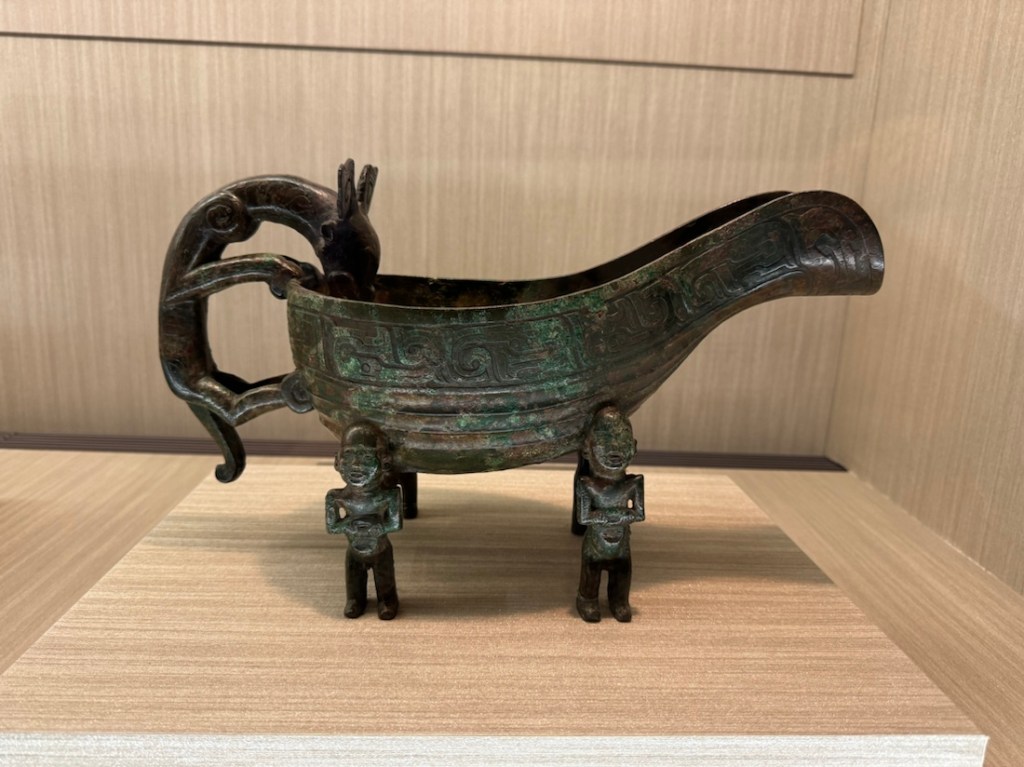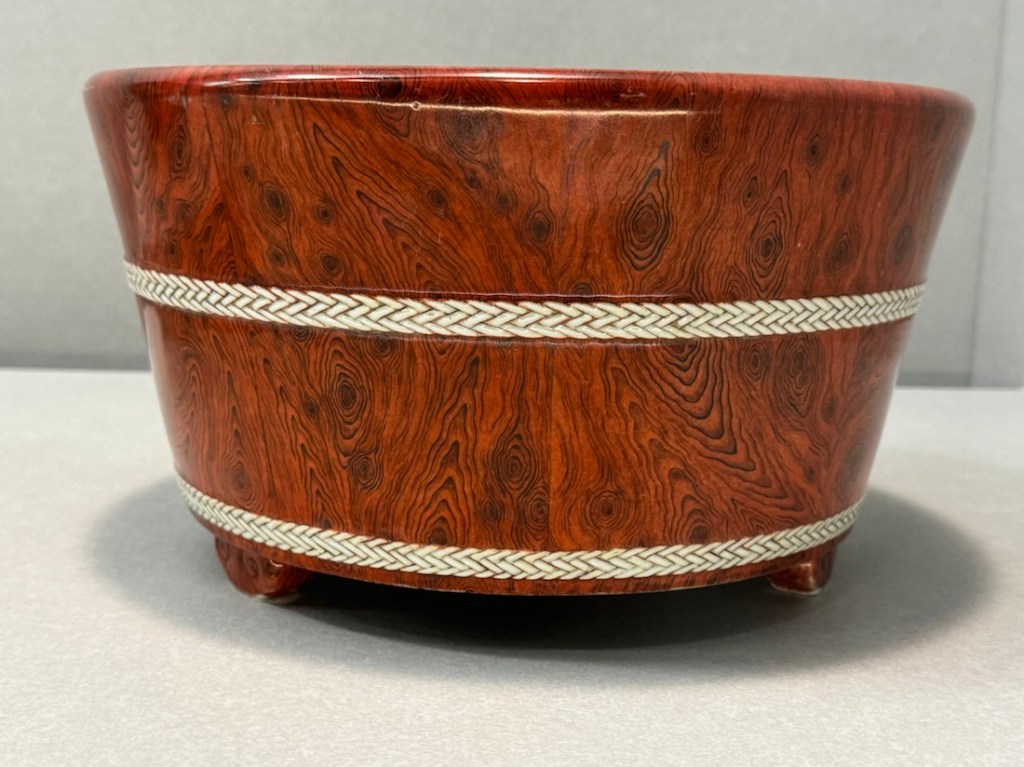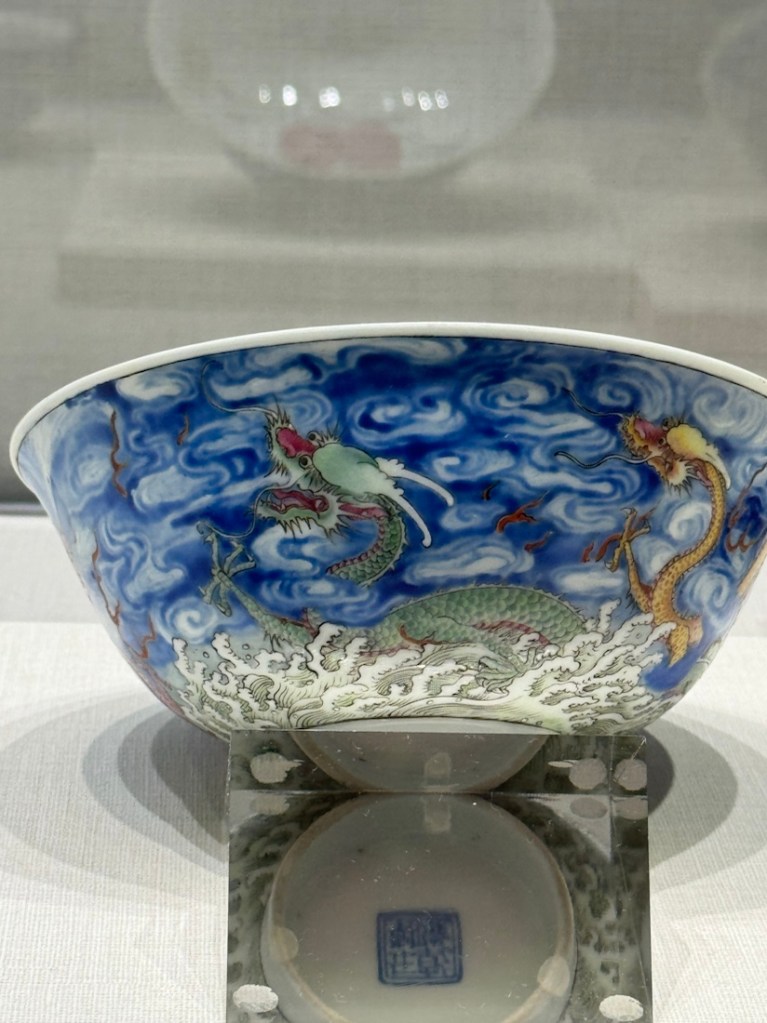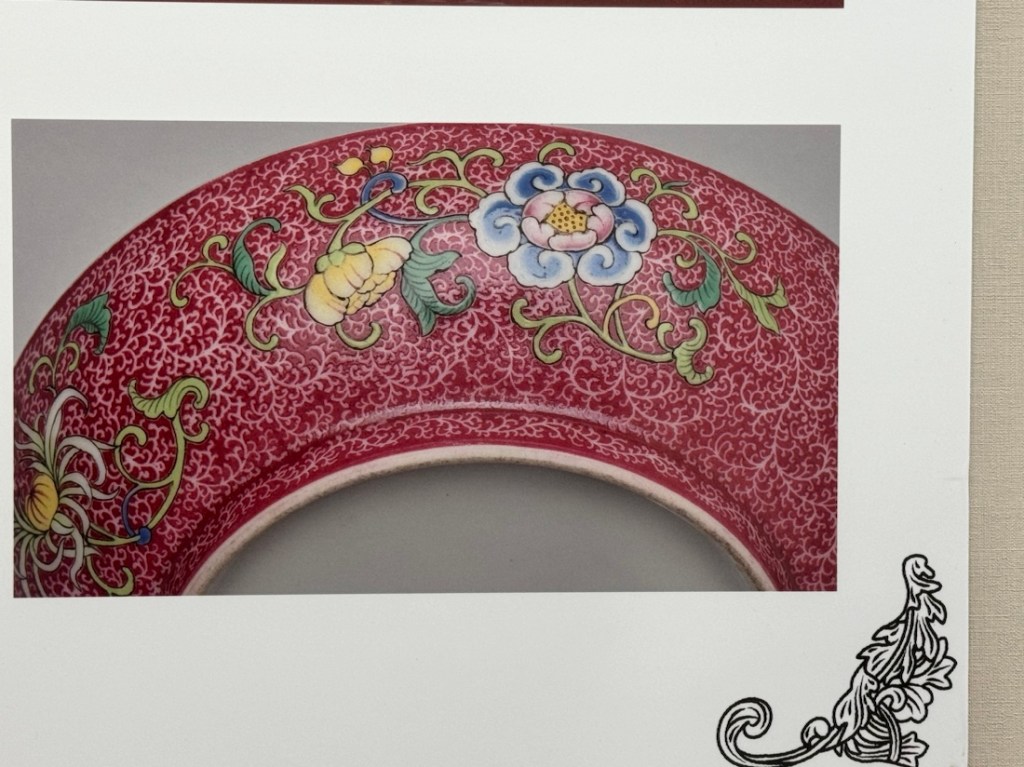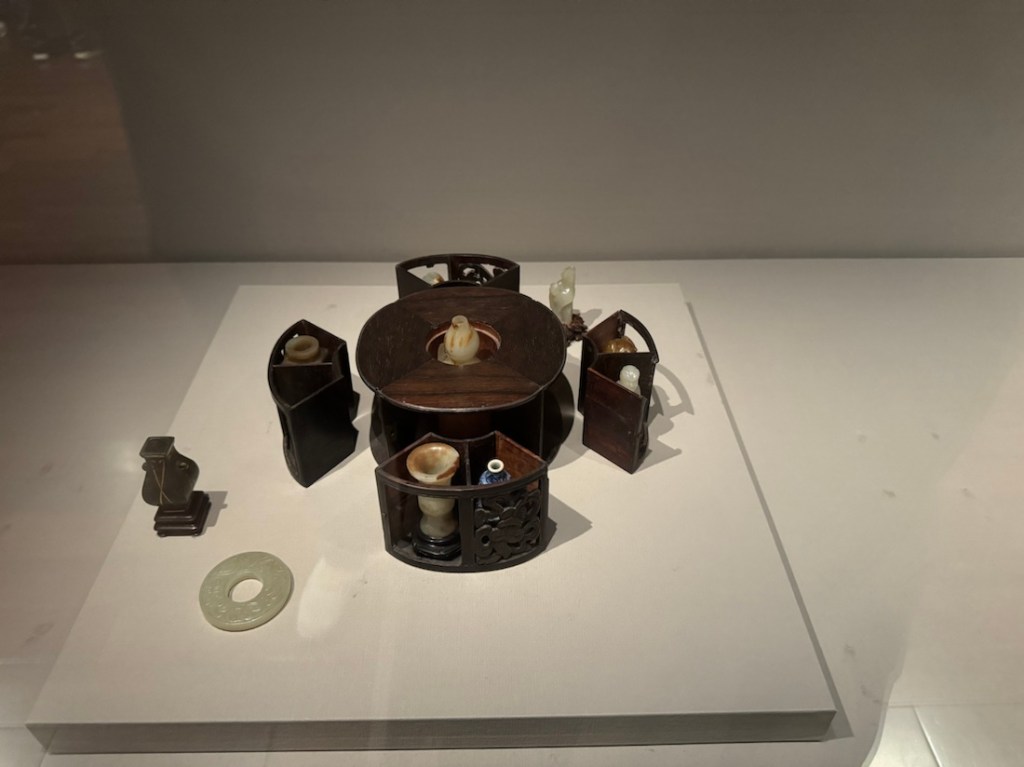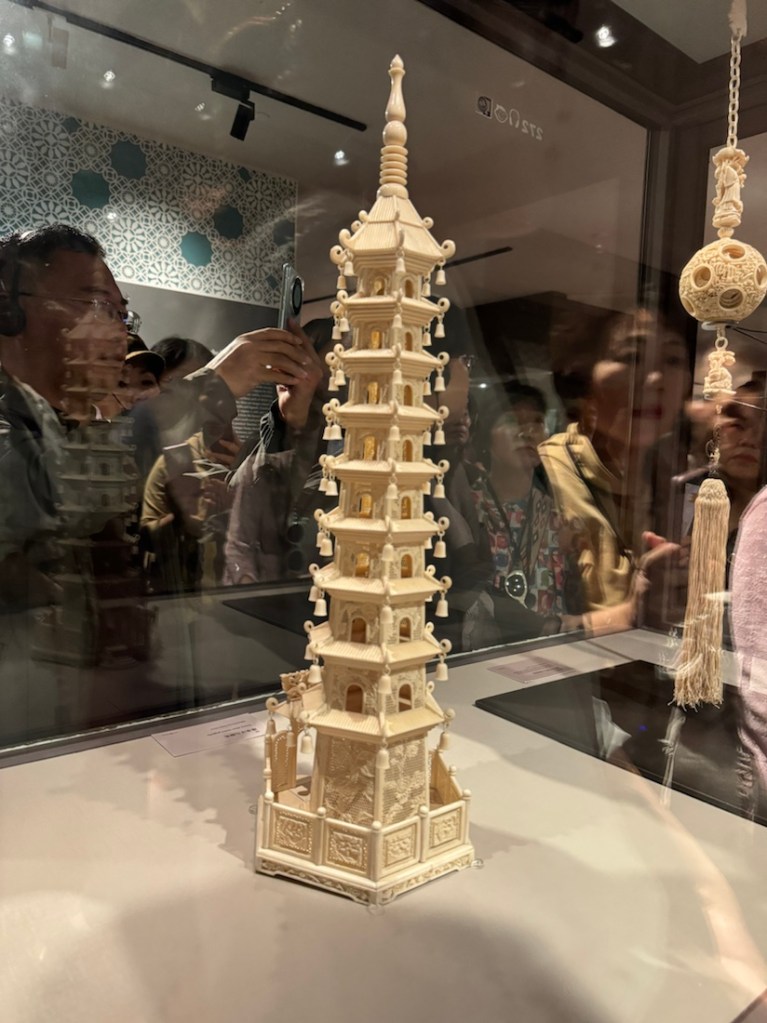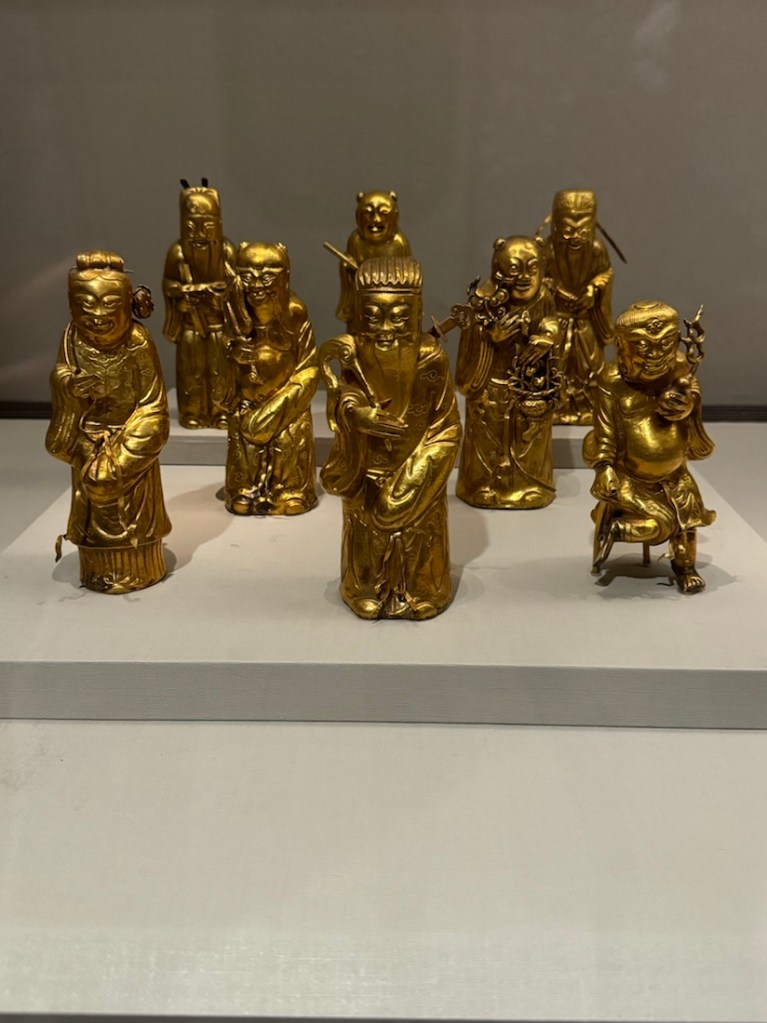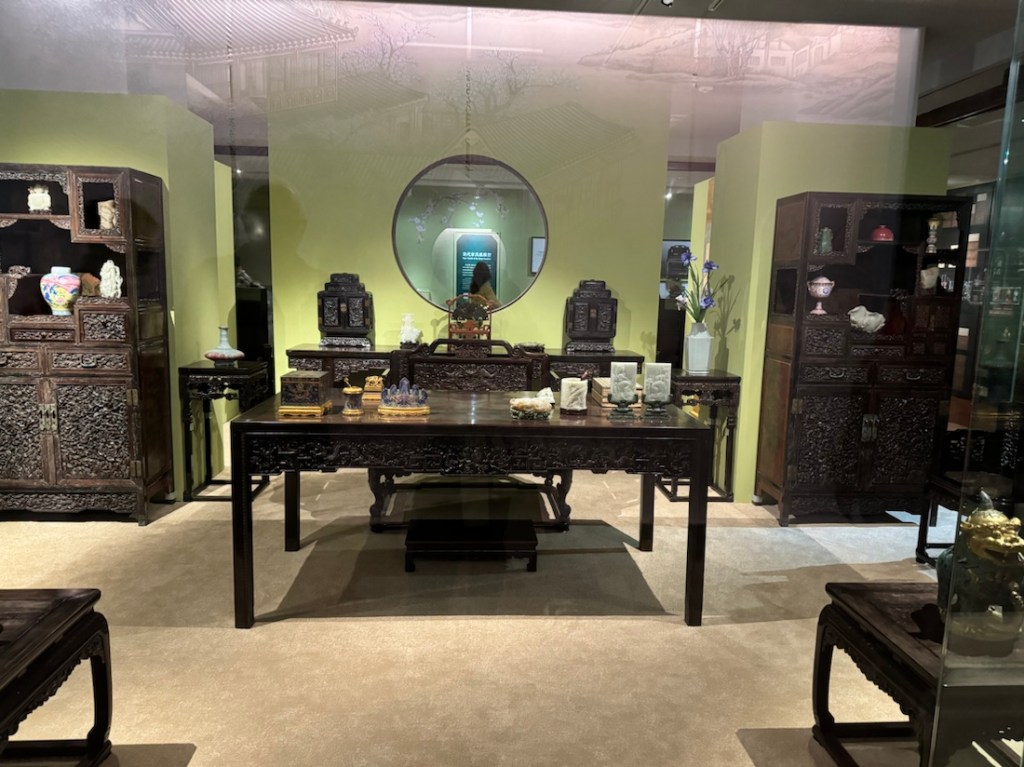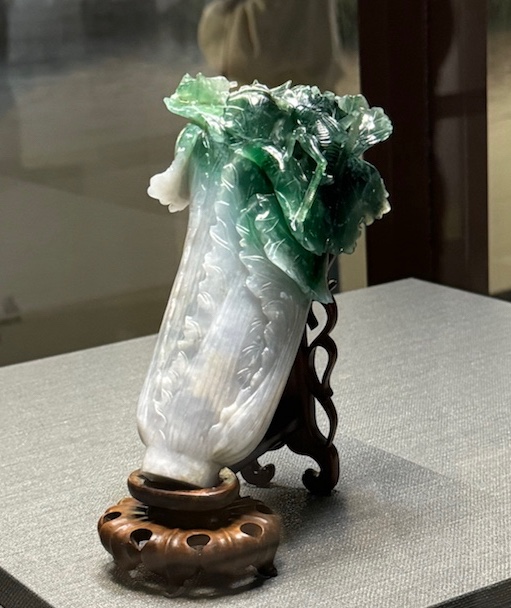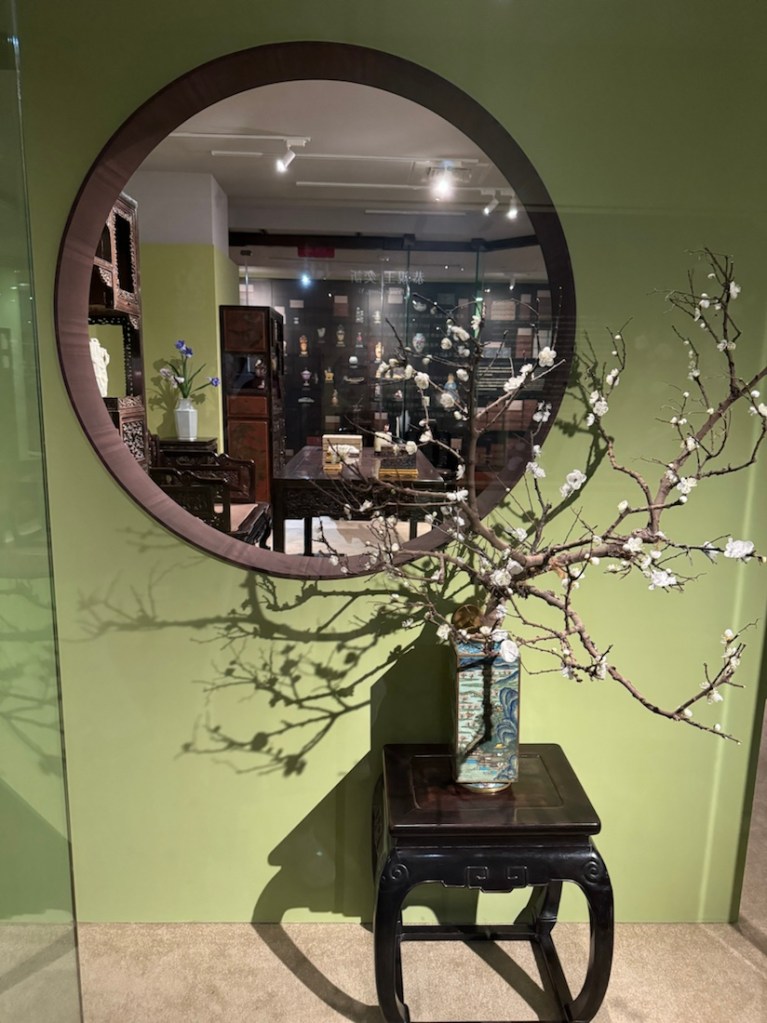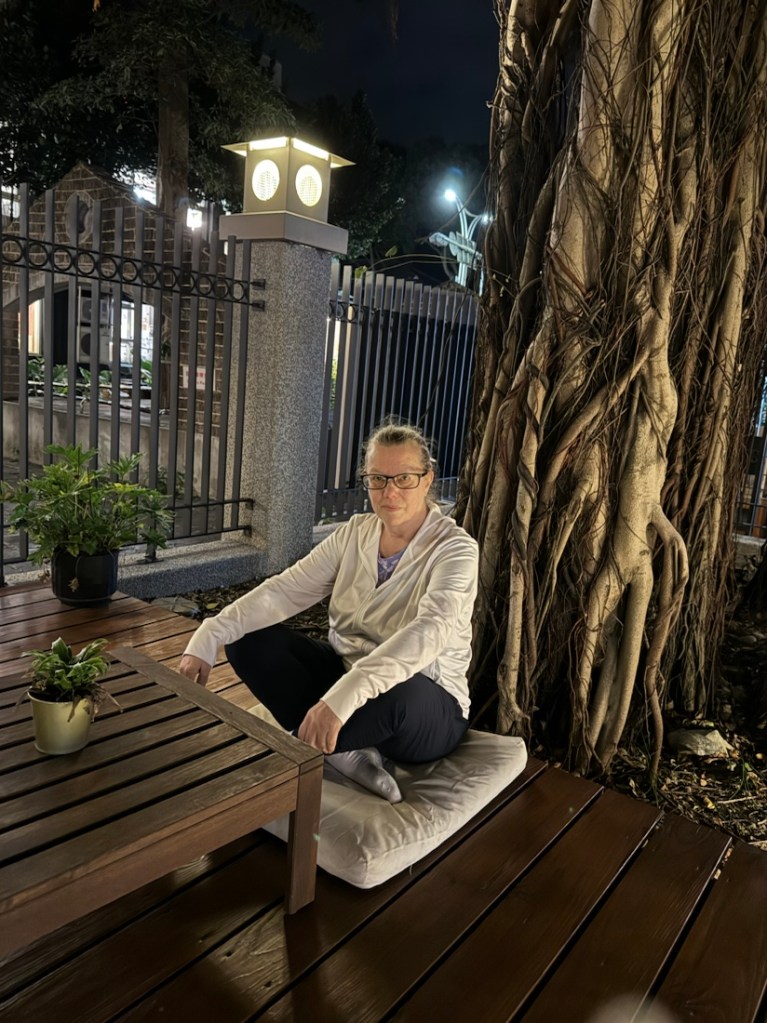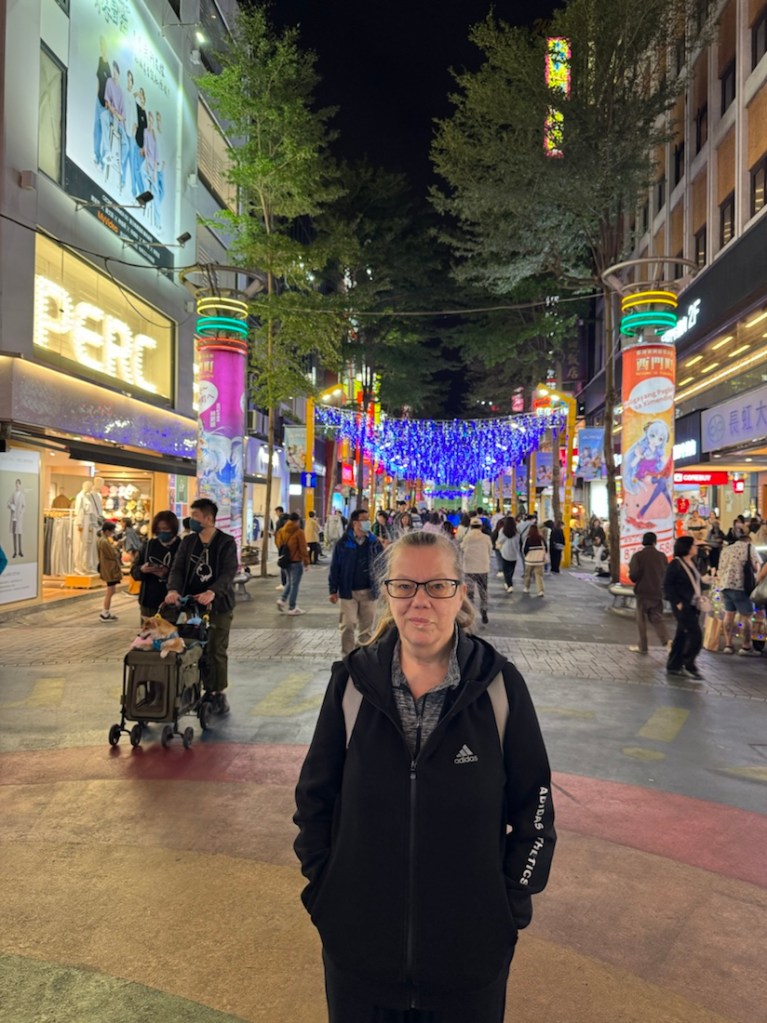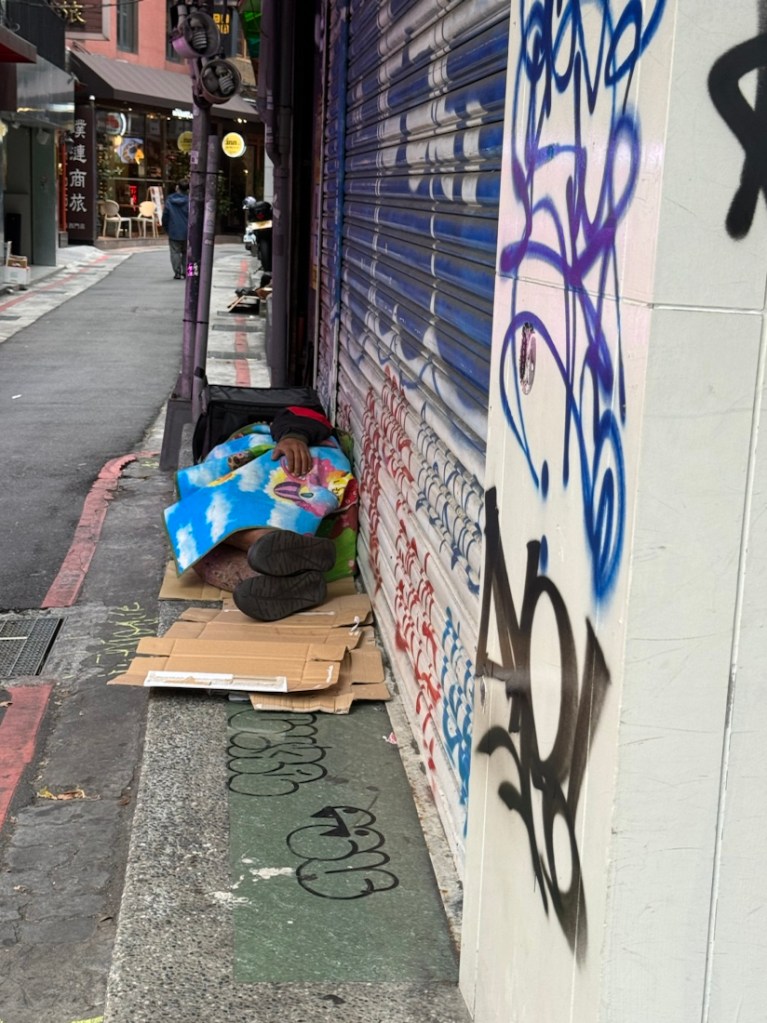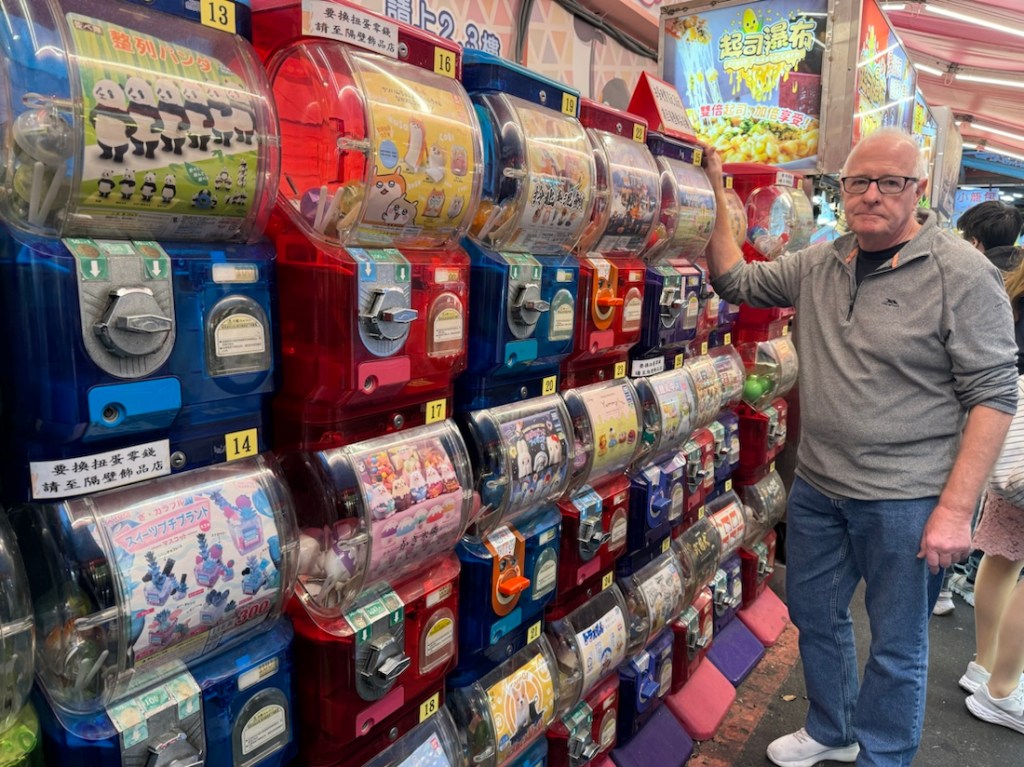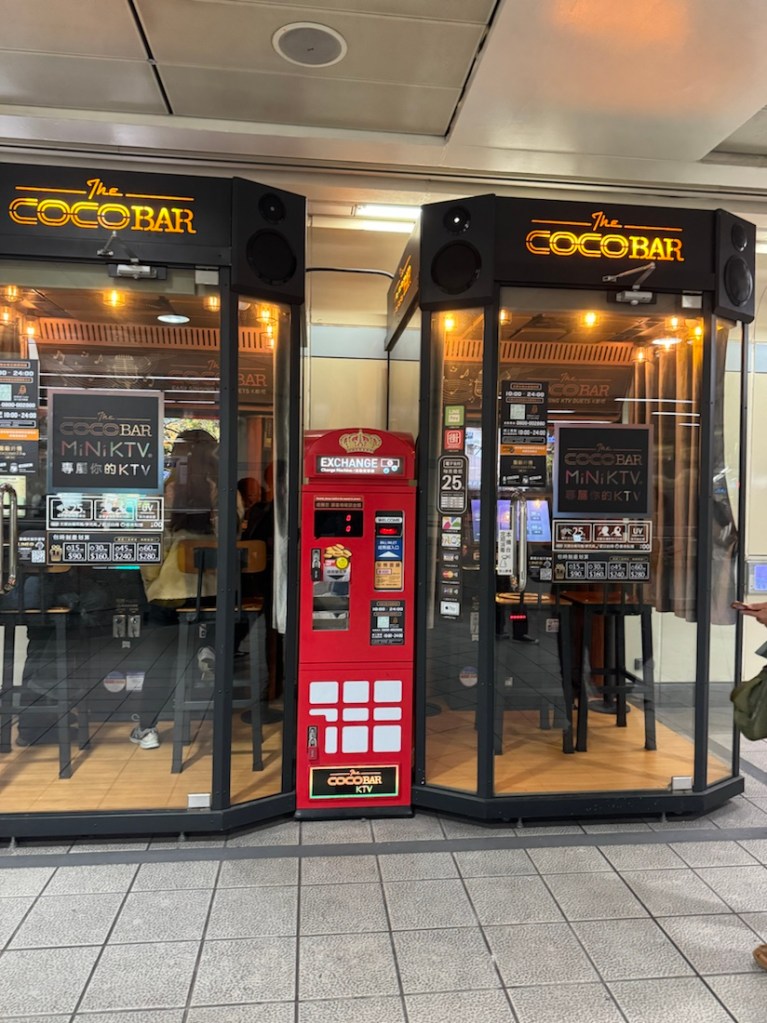Inigo likes Shanghai but it is a mega city, a concrete jungle like any other big city in the world and he is not a city boy. He has been looking forwards to our visit to the Hubei Province with Shifu which we have planned for a long time so that I can visit the WuDang Shan or Wu Dang Mountain, home to Wu Shu Taiji and a famous location for Taoists.
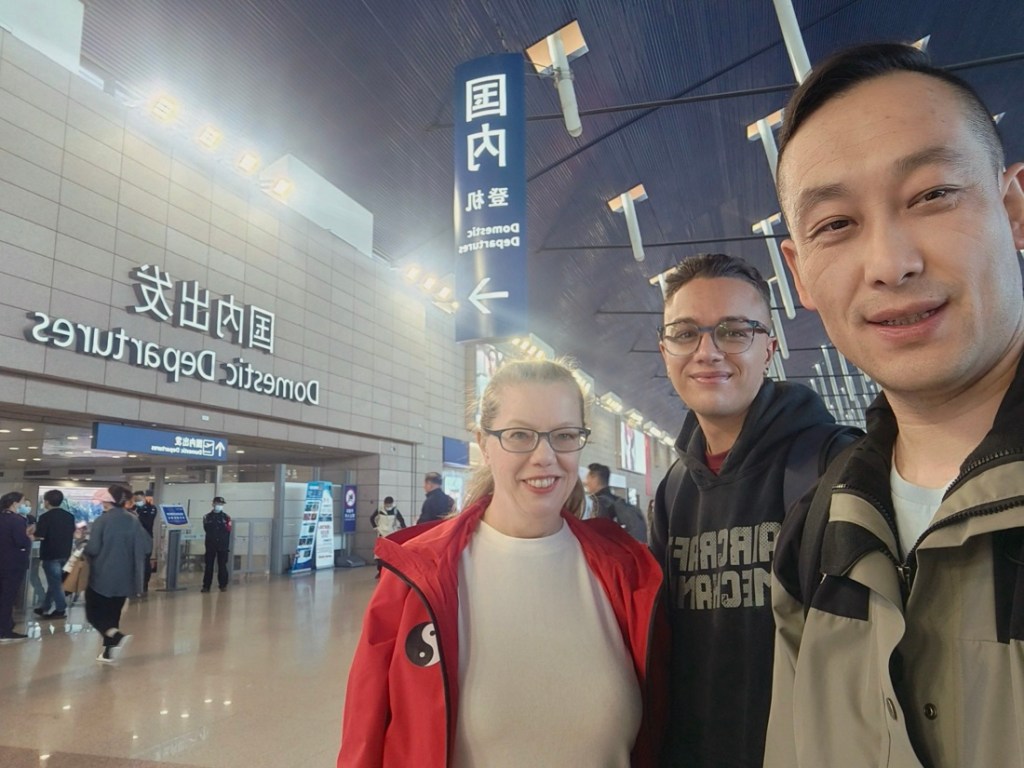
We arrived late at night and stayed in a lovely hotel with the most handsome breakfast spread that Inigo tucked into. Huge thanks to Leping for once again researching and making all the bookings for us.
Our adventure began in the morning with a somewhat scary 30 minute bus ride at speed along winding hairpin bends with sheer drops sometimes on either side! This took us to ‘base camp’ from where we could see the spectacular mountain peak.

First stop a large temple

As you can see the weather wasn’t great but at this point it was warm and dry
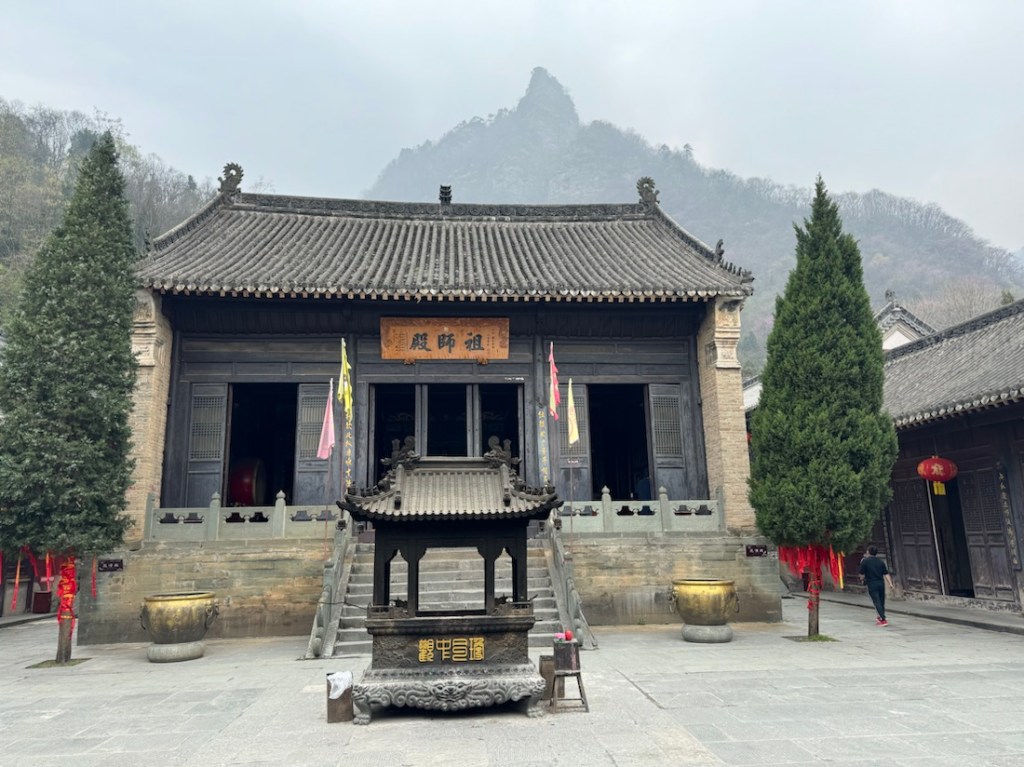

The second leg of the journey was up a cable car to a point just below the summit of Tianzhu peak (which means reach to the sky). From here we climbed up some incredibly steep steps and saw some pretty spectacular views.
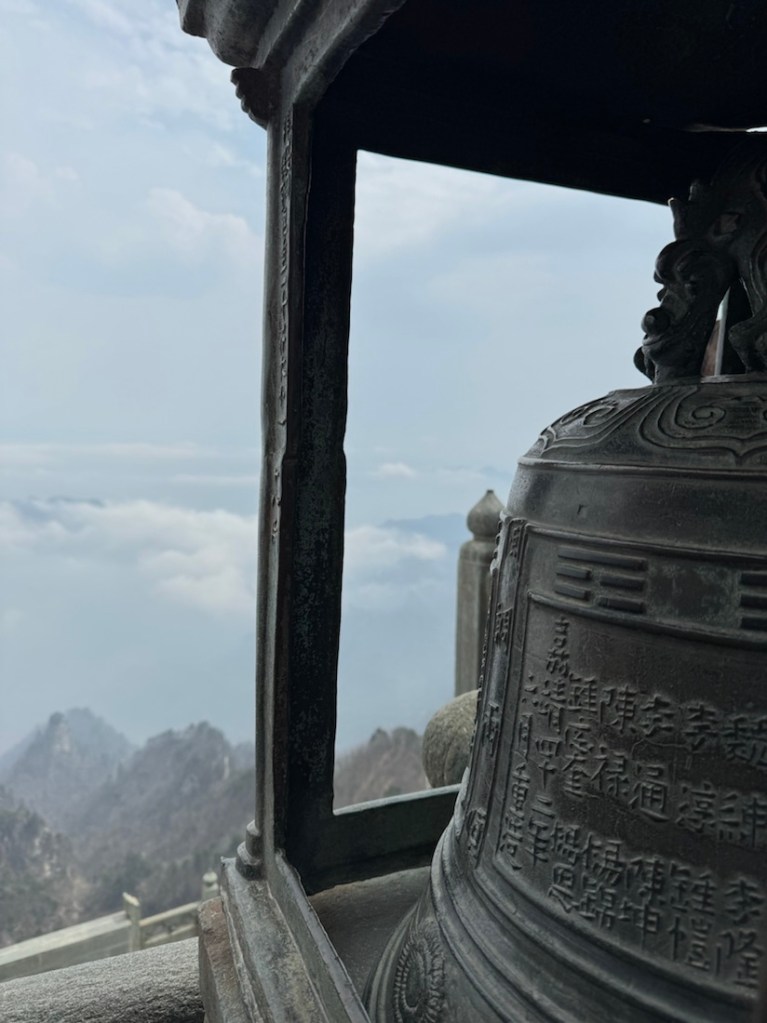
Tianzhe is 1612 meters high and we felt that we had an ‘eagle’s eye’ view at the top of the world.
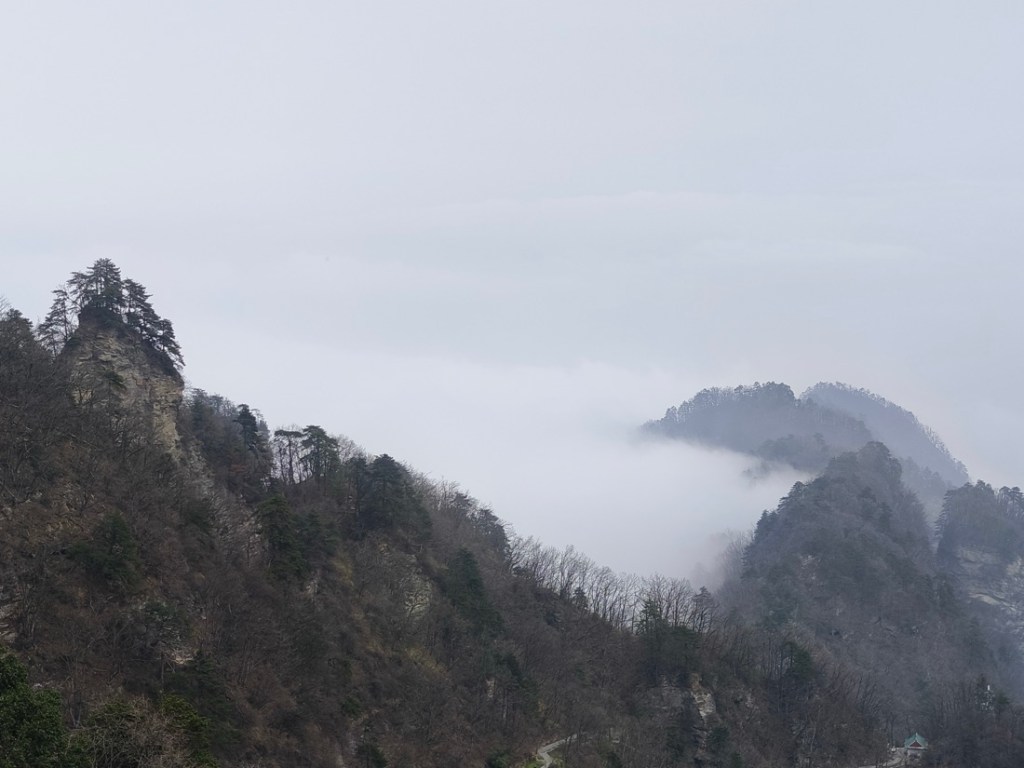
Spread below us were soft white clouds between the jagged mountains ranges around. The air was pure and clean.

As a former vertigo sufferer I was curious to see how I would be this high up but as you can see I was relaxed and able to go near the edge with no problems at all.

Once on the summit we walked in a large circle to visit several temples or shrines. The very top being called ‘Gold Top’ (which reminded me of milk bottles from my childhood!).

The steps up to here were the steepest and had chains or rope sound around the balustrade to help you to climb. I was grateful for those. The top here was crowded with a large group from Fujian so we couldn’t get close to the actual shrine. At base camp Shifu had purchased 3 bags of incense so I did all that climbing carrying 2 of them!! Quite an accomplishment I felt.
Built in 1416 as a shrine solely for use by the Emperors and royal family of the Song Dynasty we visited the Taihe Palace, the Golden Hall, the Yuxu Palace, the Gutong Palace and the Jade palace. All small but very impressive that they constructed all this at that time so high up! Imagine carrying all the building materials with no bus/cable car!

Once we had completed the circuit which easily took an hour with lots and lots of up and down staircases we stopped for a bite of lunch. Everything tastes better in the fresh air after all that climbing.

Then the descent began. But first we found a furnace to throw our incense into. Plastic wrapping and all.


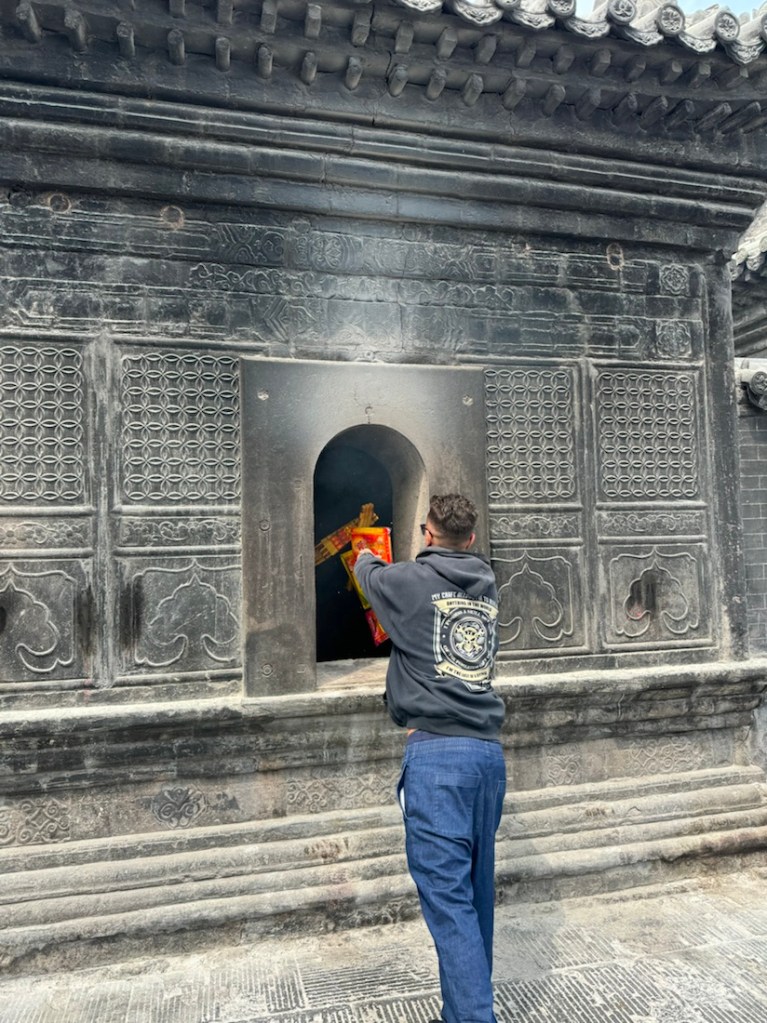
Surprisingly it didn’t smell gorgeous there considering that was all that was being burnt! Maybe the fumes were directed into the temple somehow.
Anyway, off we set. It was a 2.5 hour hike and downhill all the way. Or should I say down stairs! Lots and lots and lots of them. Did I mention how high we were?
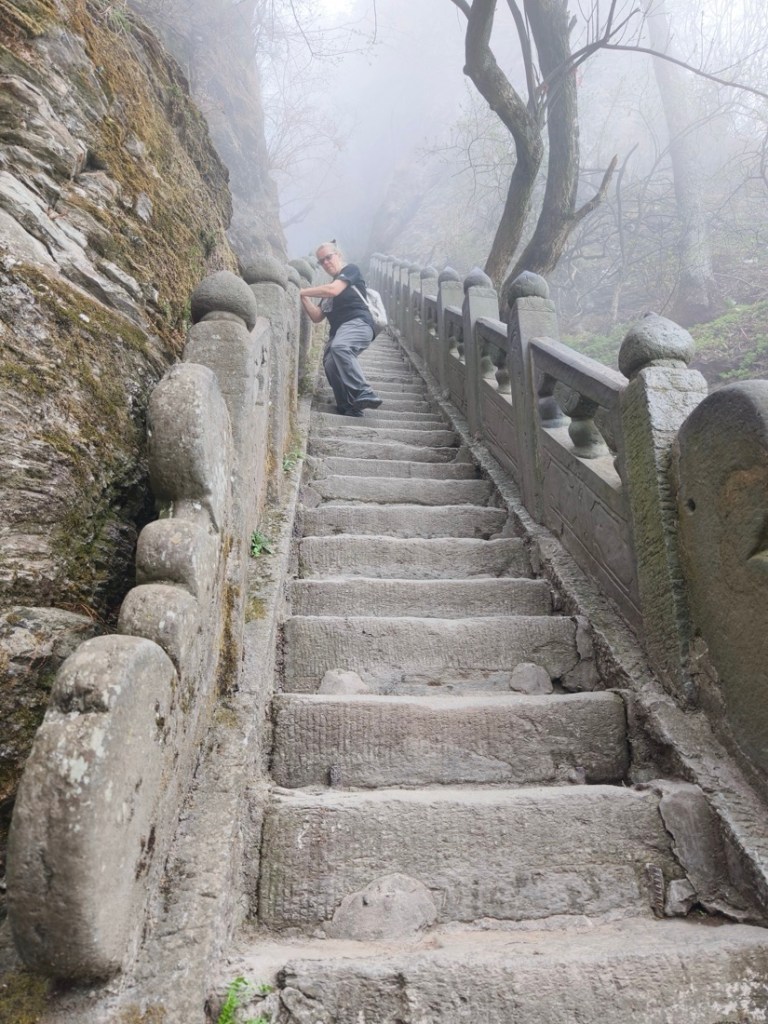
There were 4 super long staircases which were so long that we couldn’t see the bottom! I just looked at the stair in front of me and kept going. One step at a time. Hanging on in there.
Then the sides of the stairs disappeared and my aging knees were starting to feel the strain. Actually my long time knee injury held up pretty well all things considered as Shifu has been working on it for me over the previous months but the continual descent was taking its toll.
Then about half an hour into the descent the rain came in.
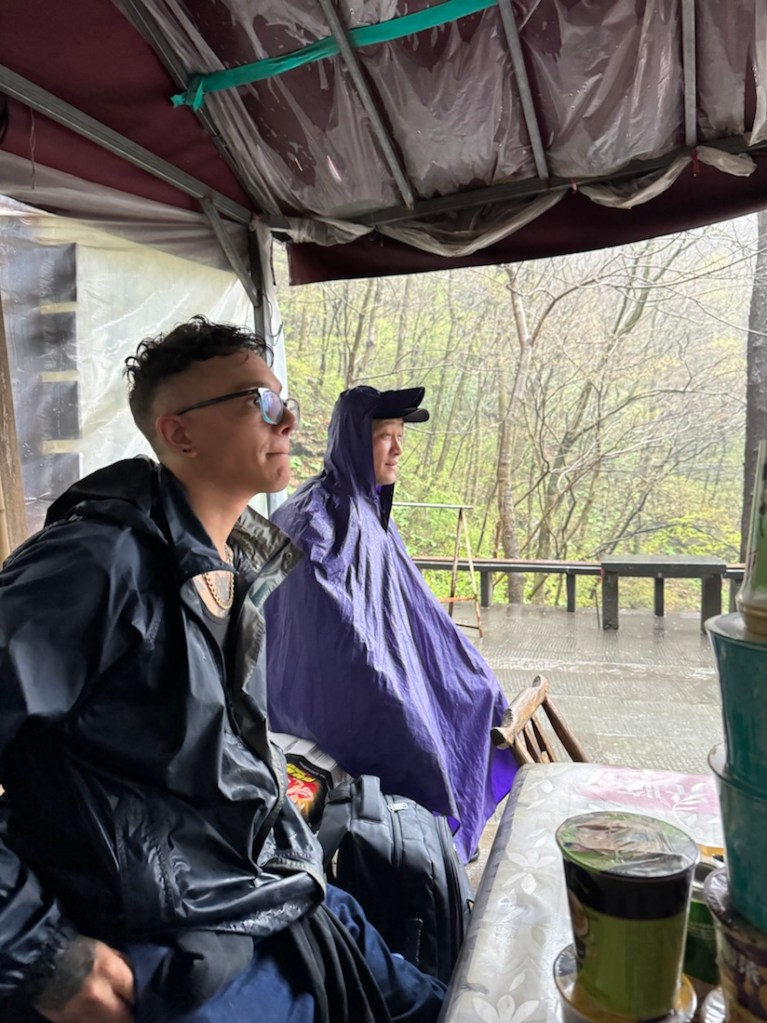
Not just a little bit of rain but heavy rain. The stair treads turned to pools and became slippery and more treacherous (oh great! Just what I needed)
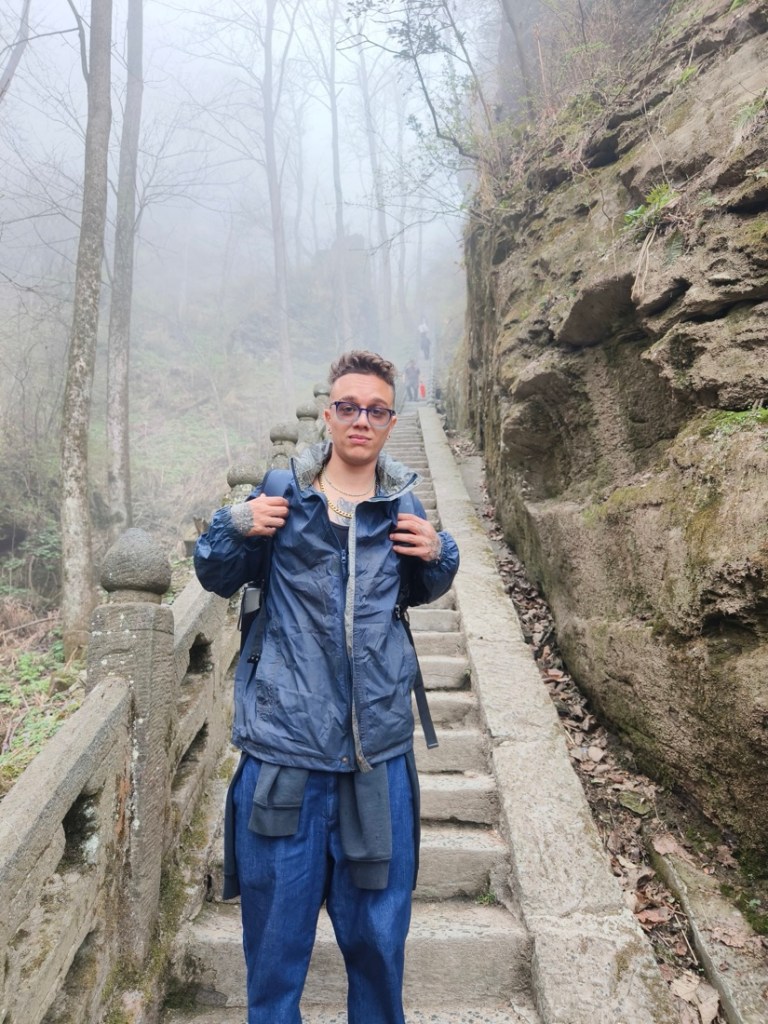
The men were fine and did lots of these steps down with no problem at all but I am not ashamed to admit that I needed a helping hand. By the time we reached the bottom the backs of my knees were painful and the tendons hurt with every step that I took.
The hot shower at the mountain hotel was one of the most delicious we have ever taken. Unfortunately the few supplies that we had brought for this excursion (Inigo carried those) also got damp in the heavy rain so we didn’t really have nice dry clothes to change into which was a shame.
According to my phone’s health data we had climbed down the equivalent of 97 floors. So maybe it was not surprising that my legs were sore the next day. After all I am an old woman!



